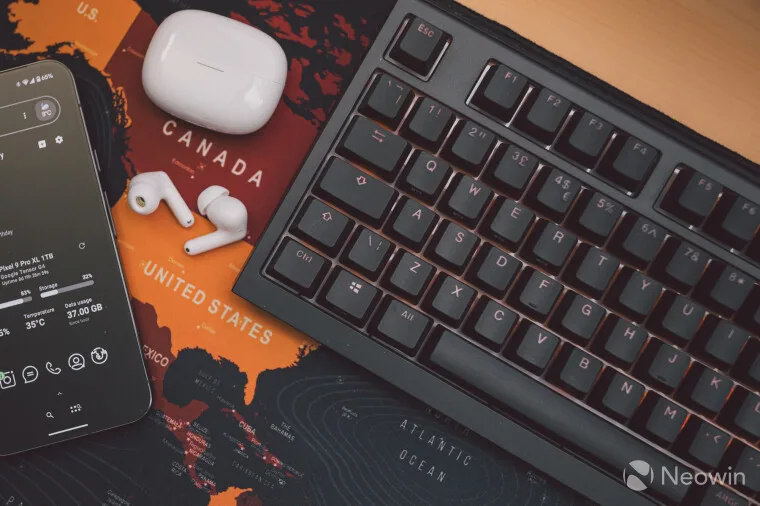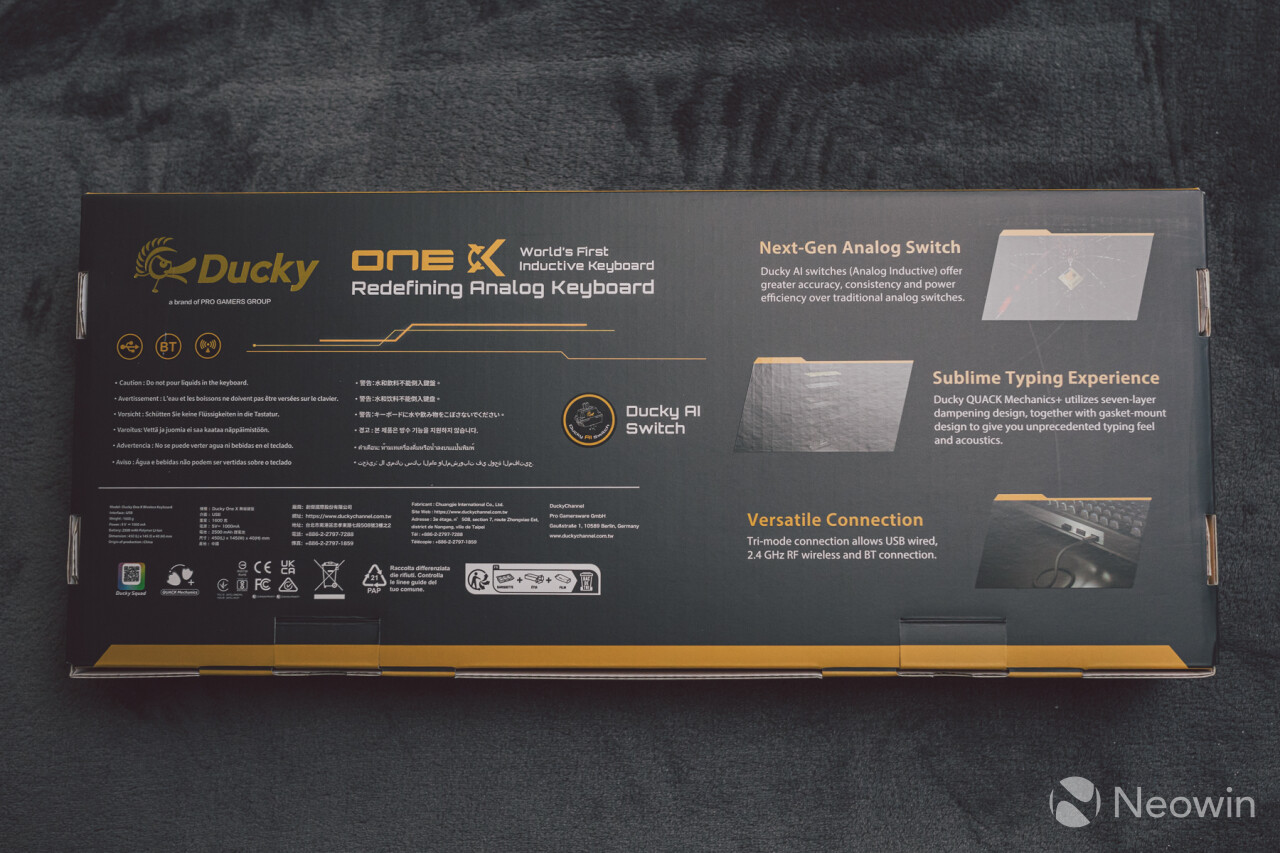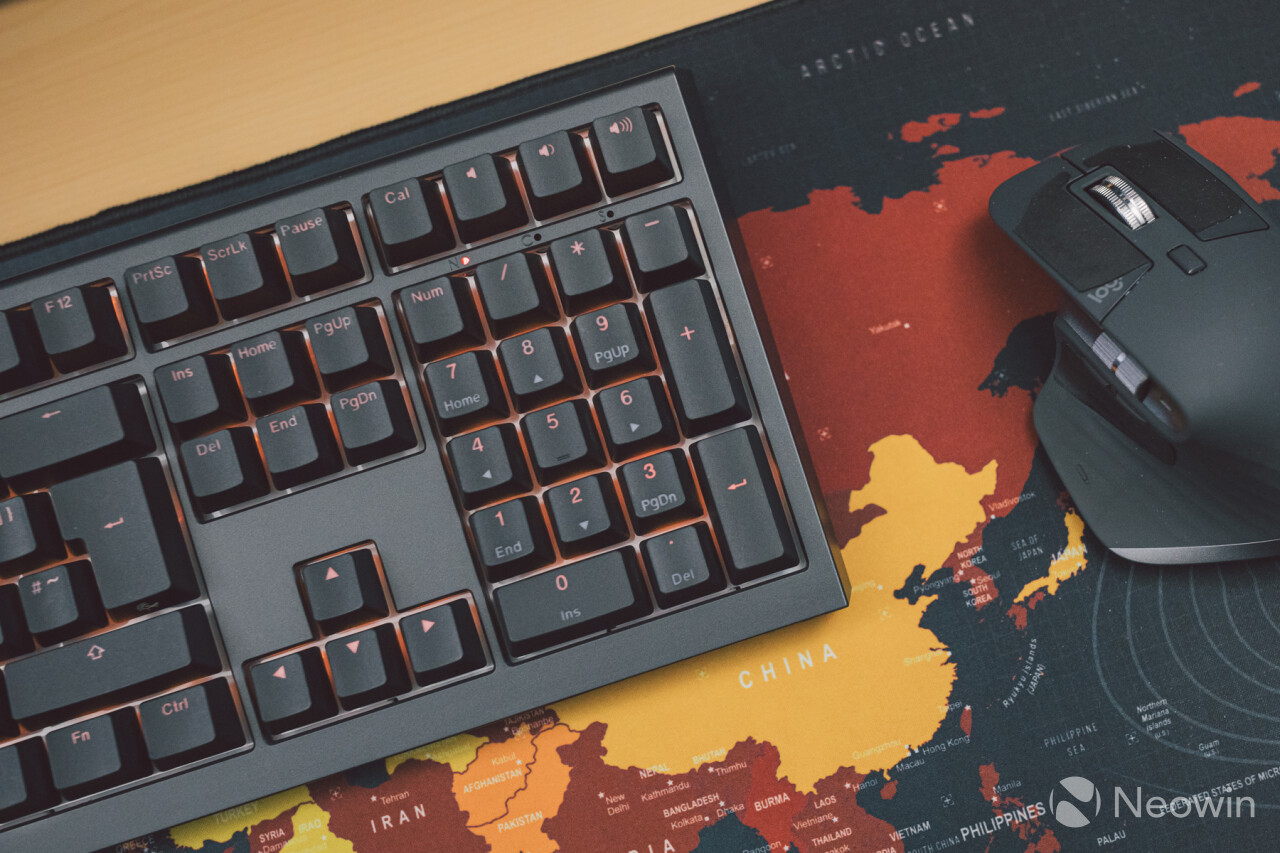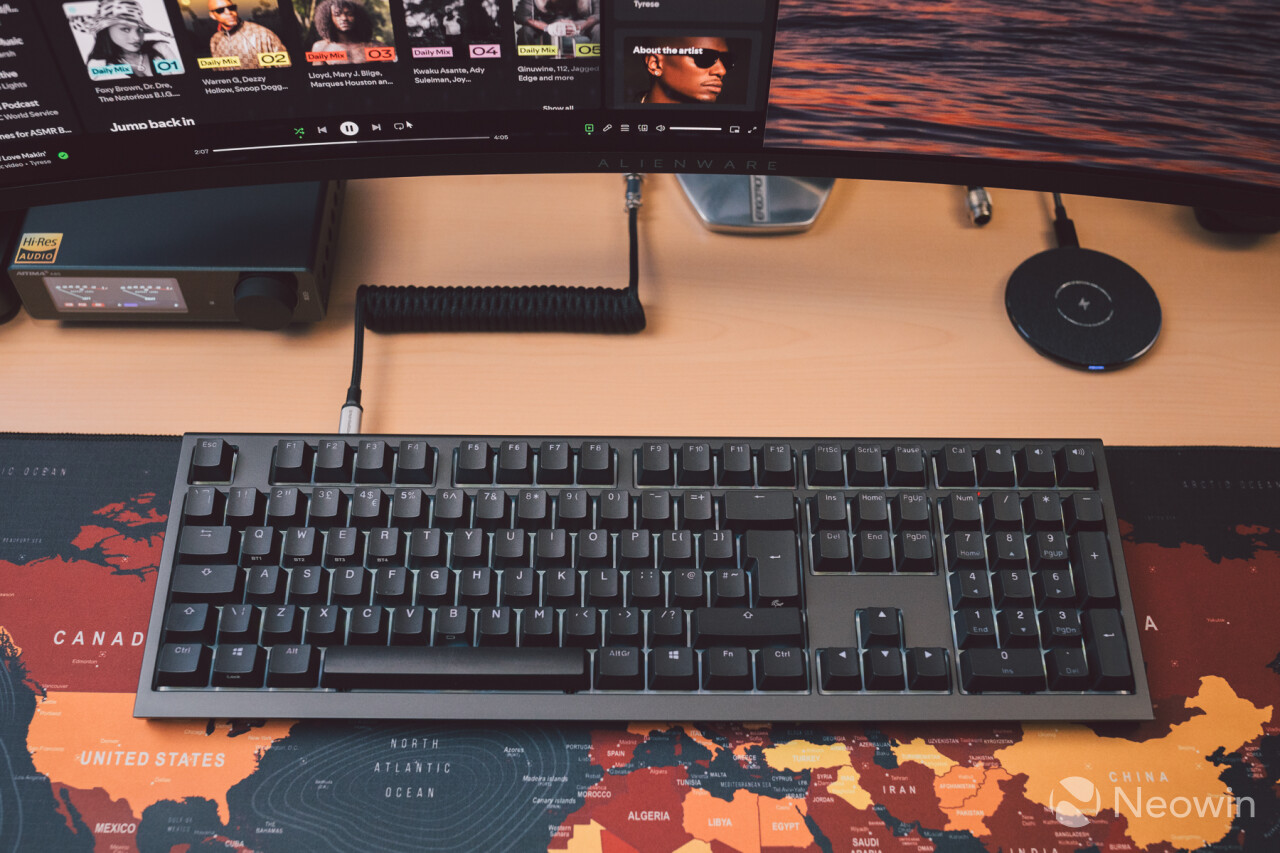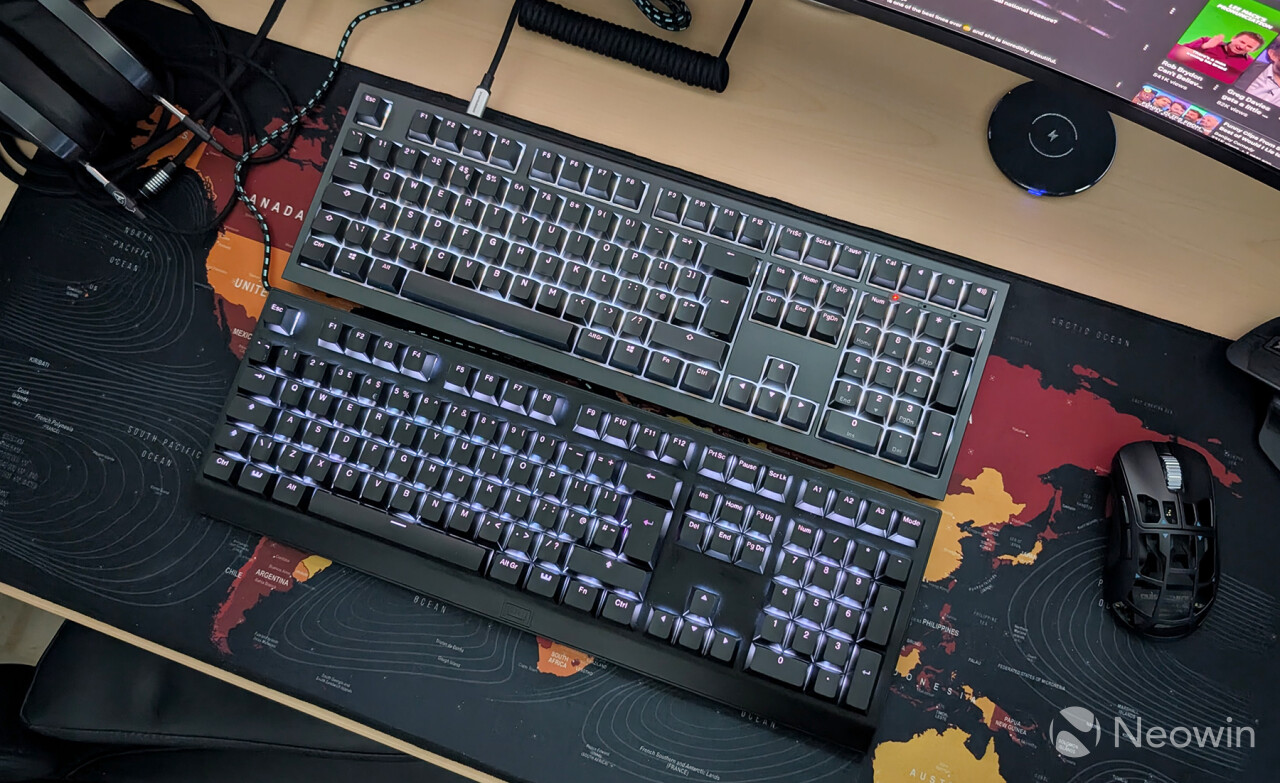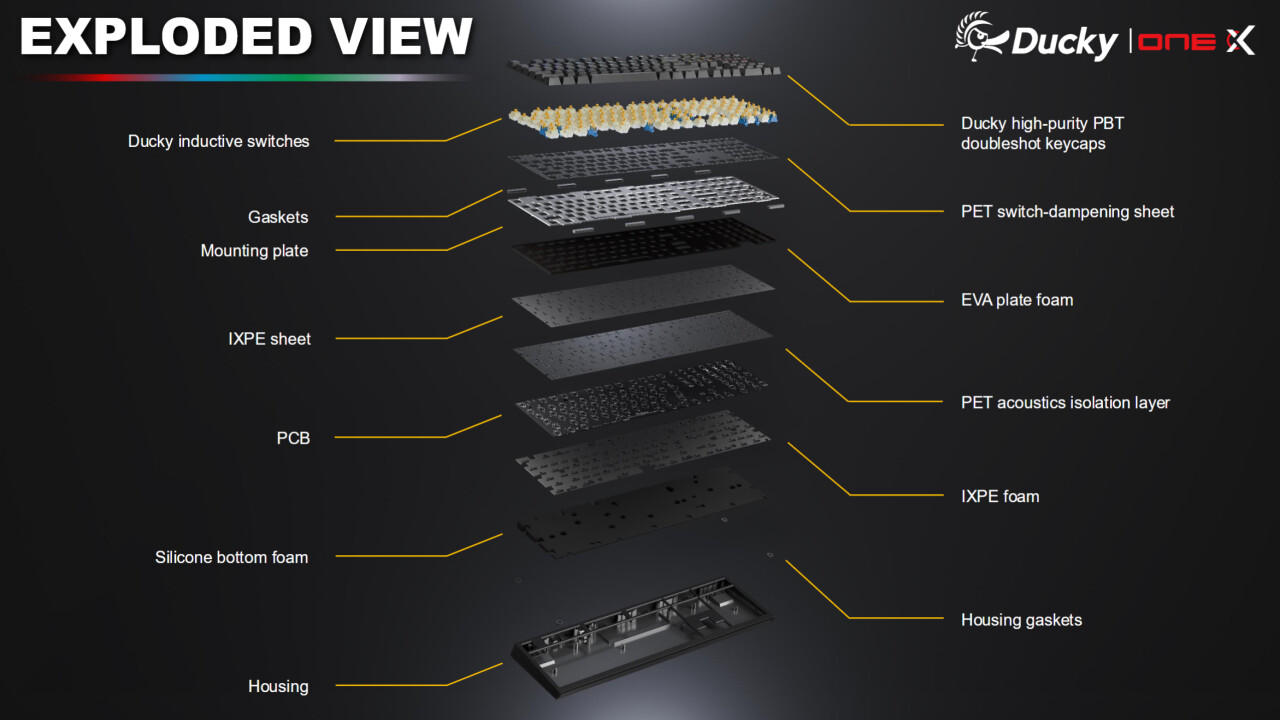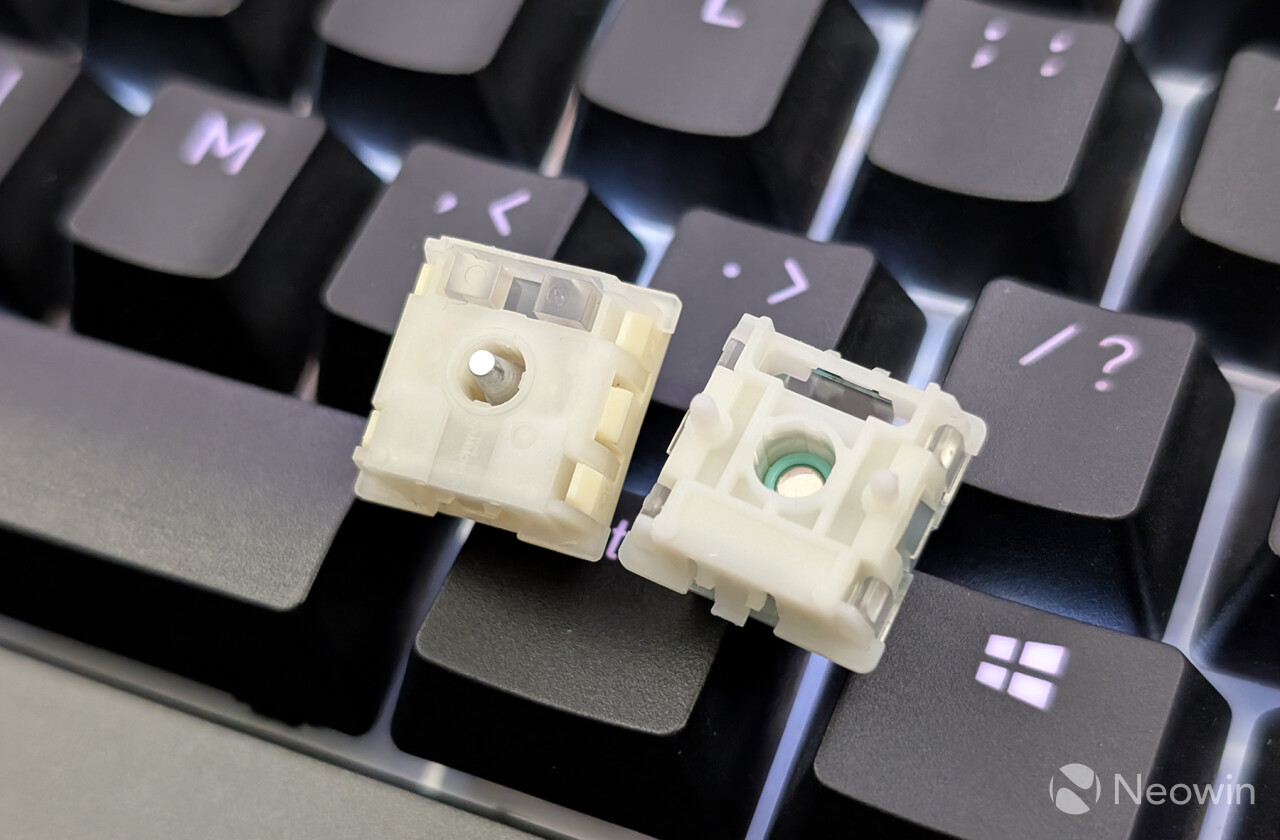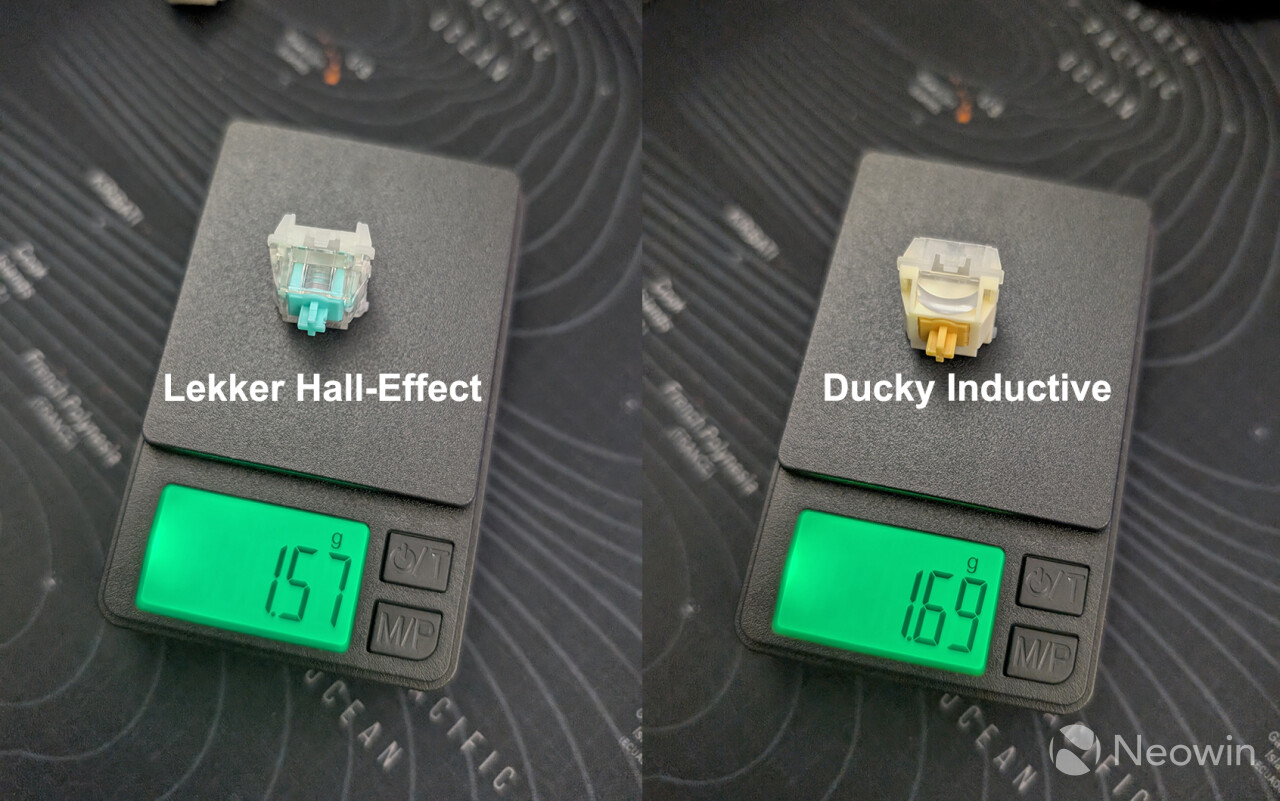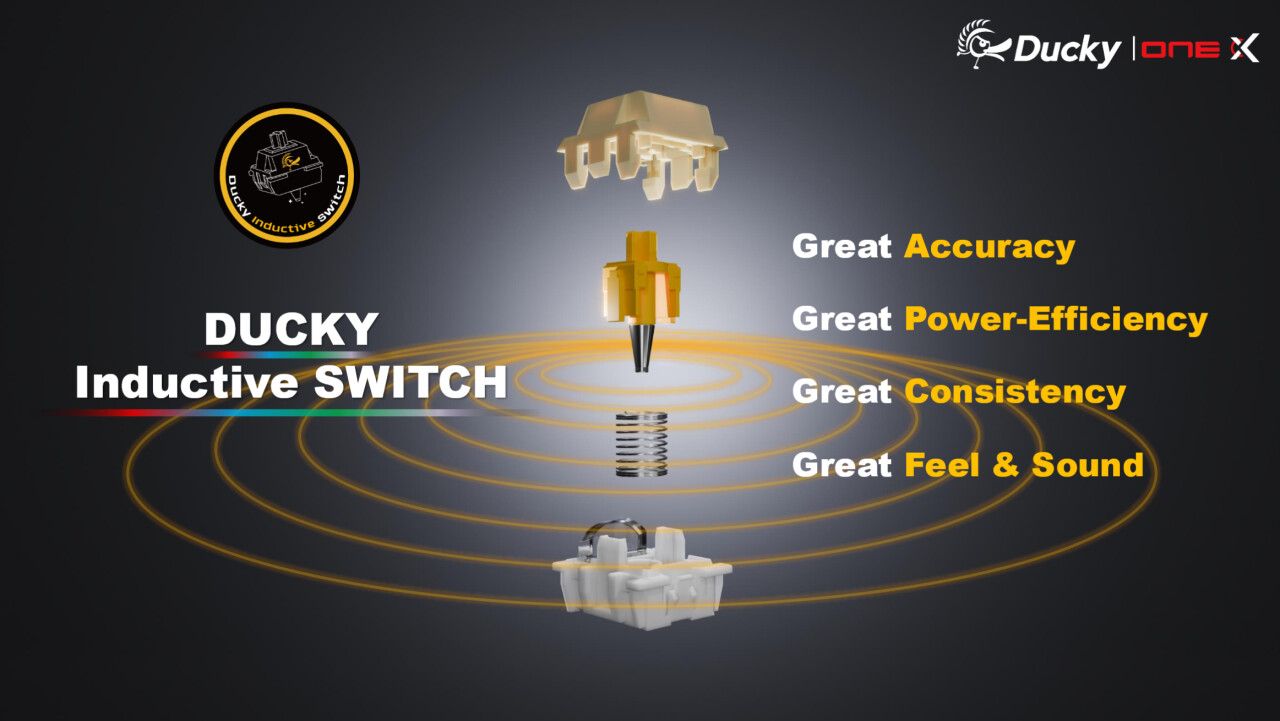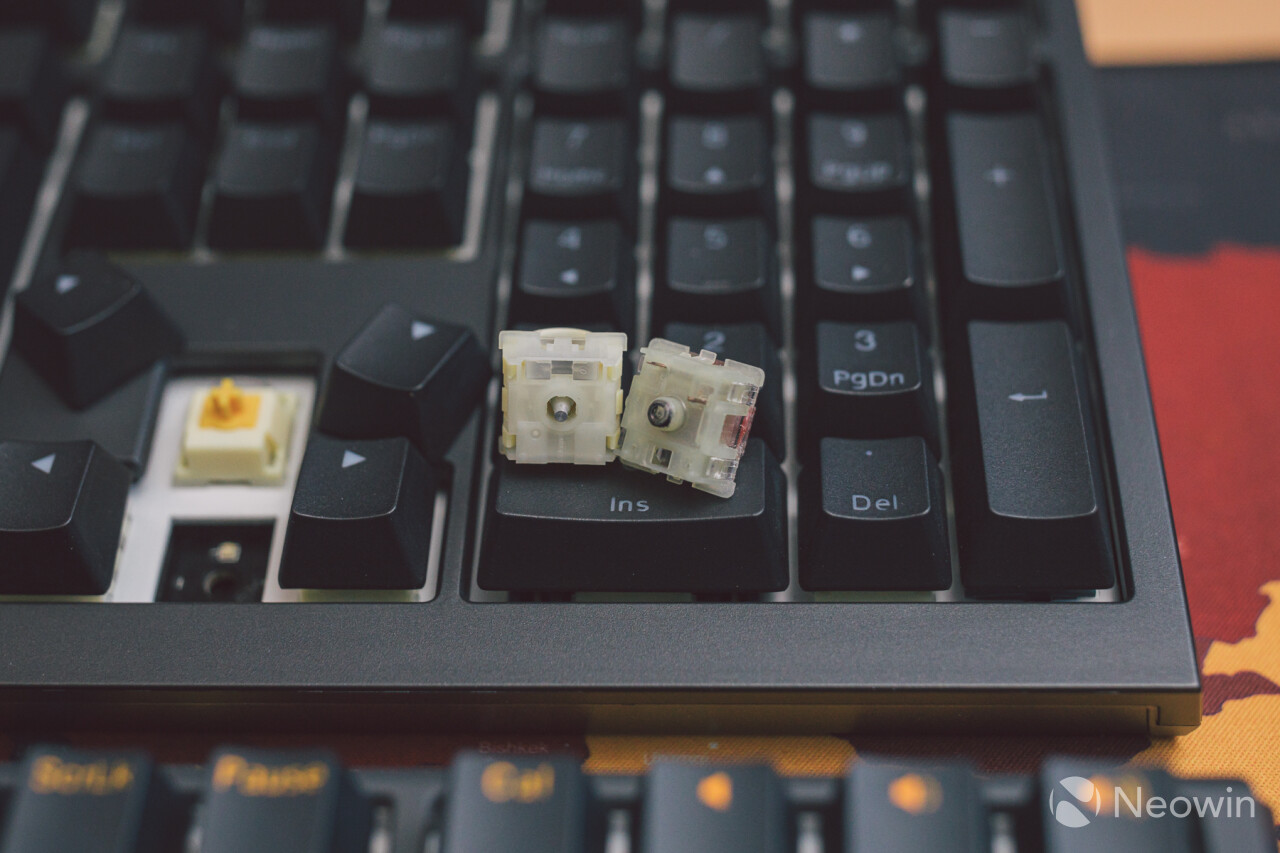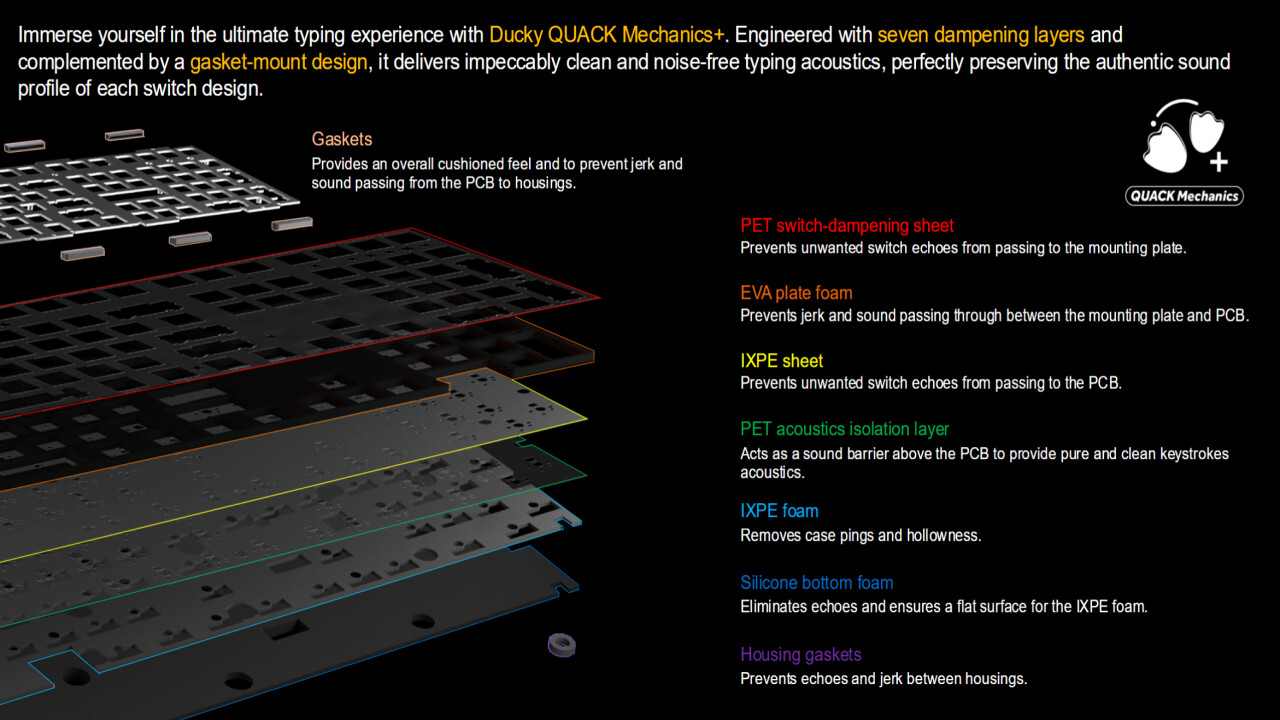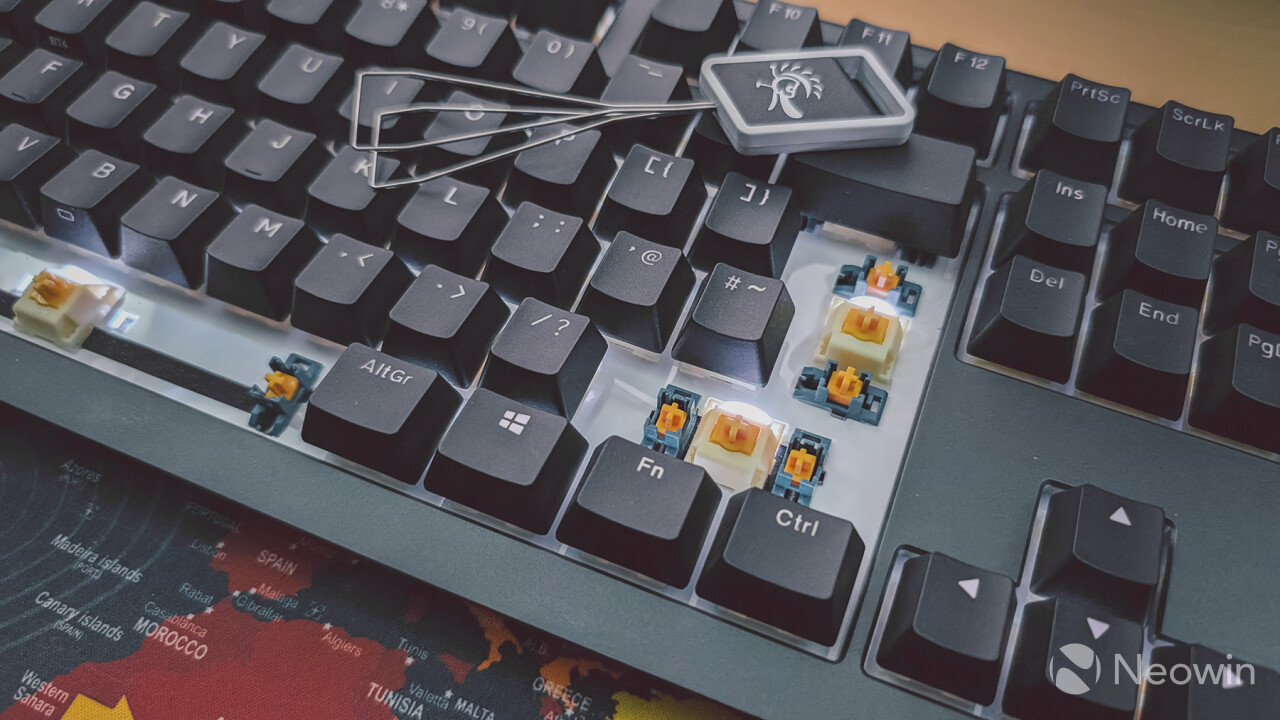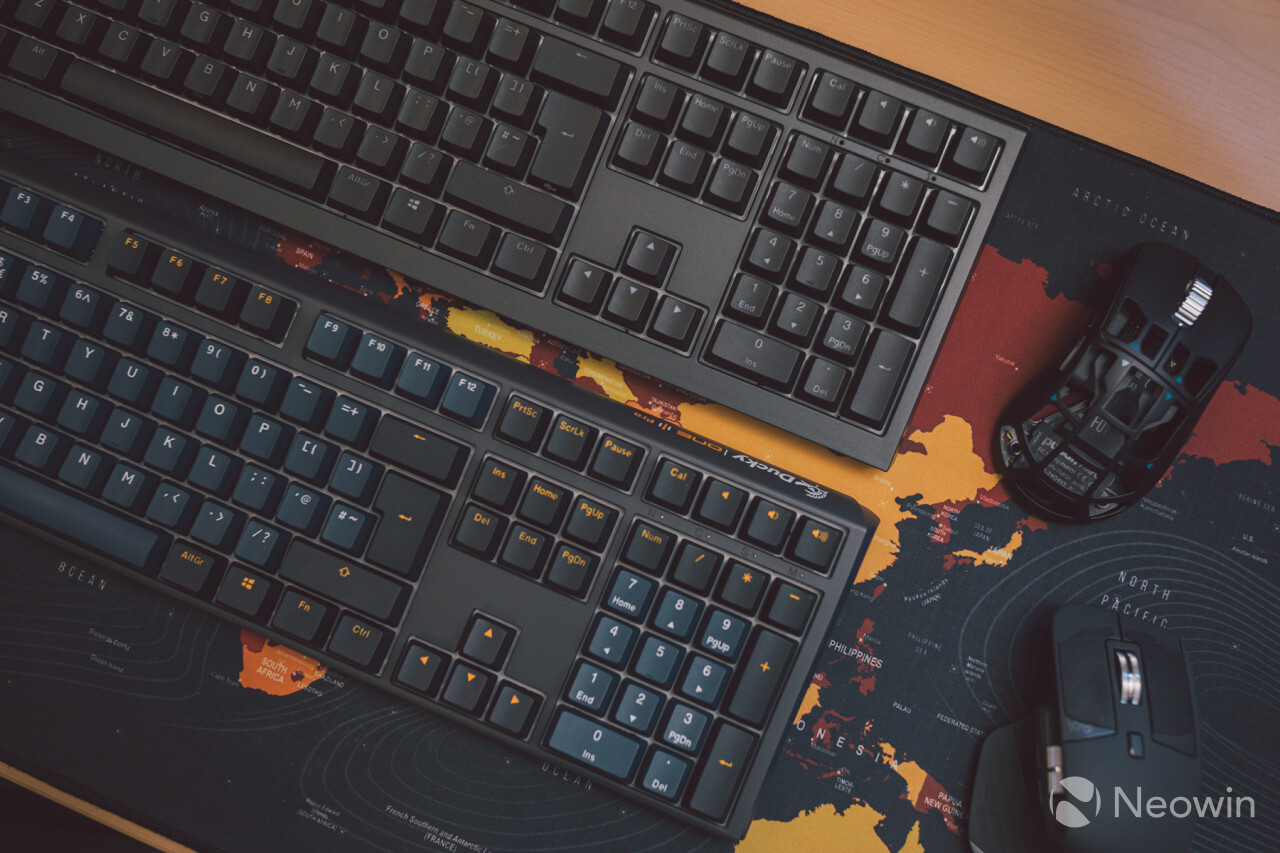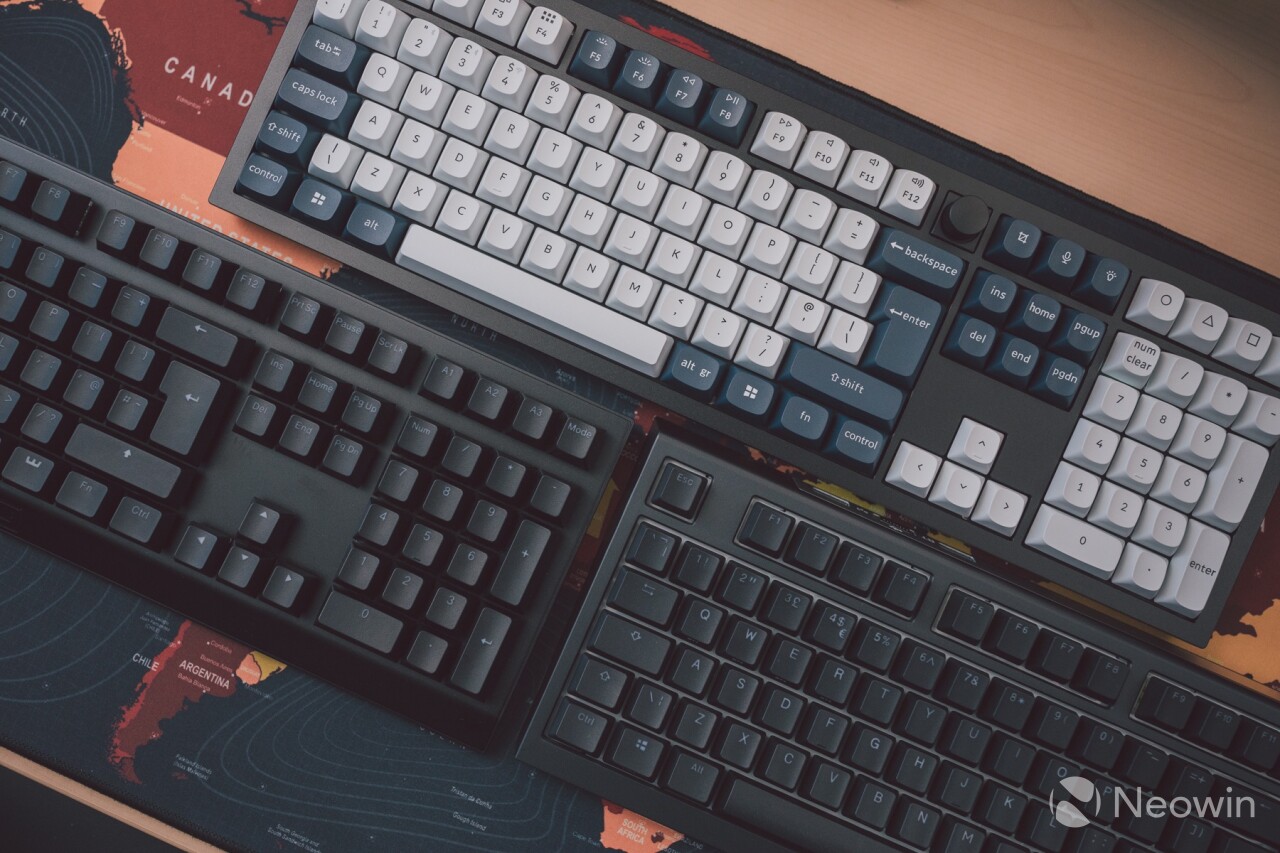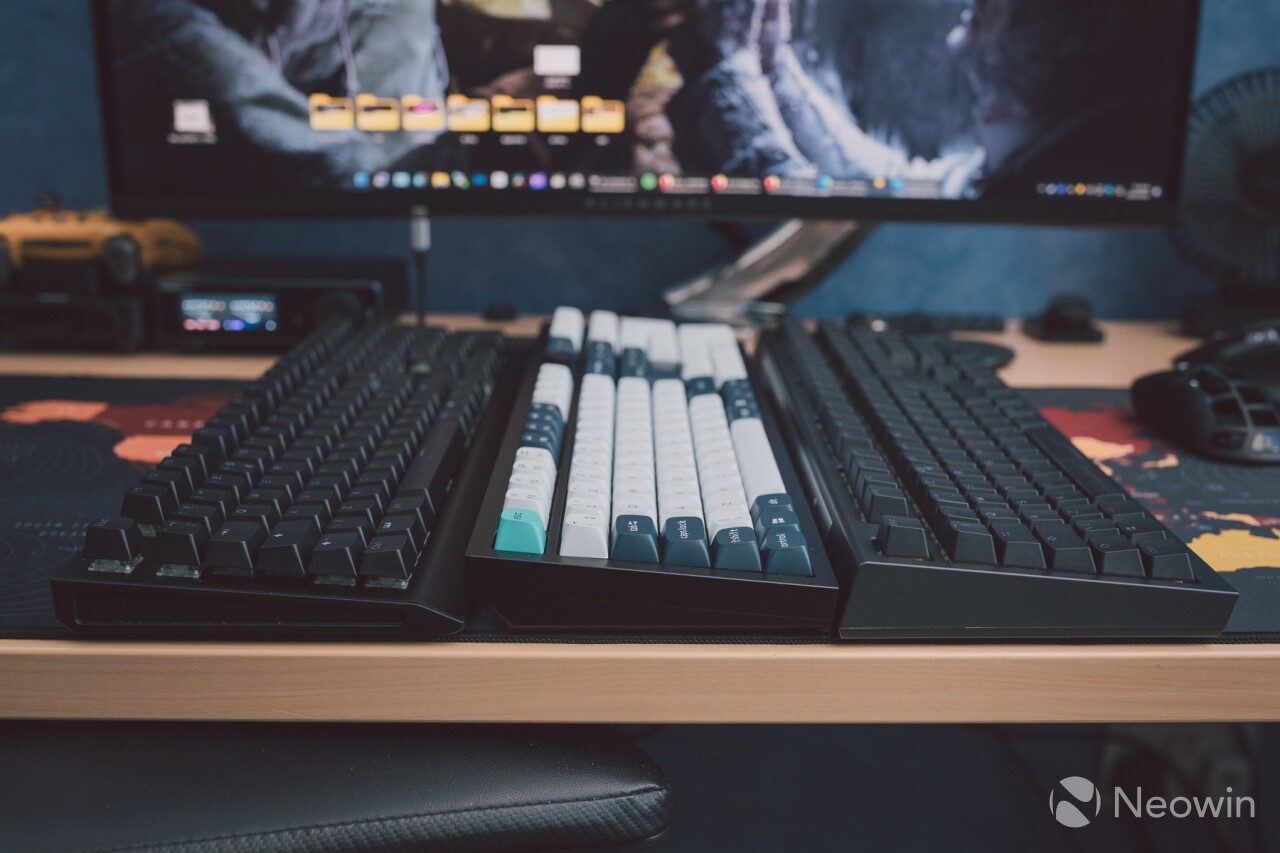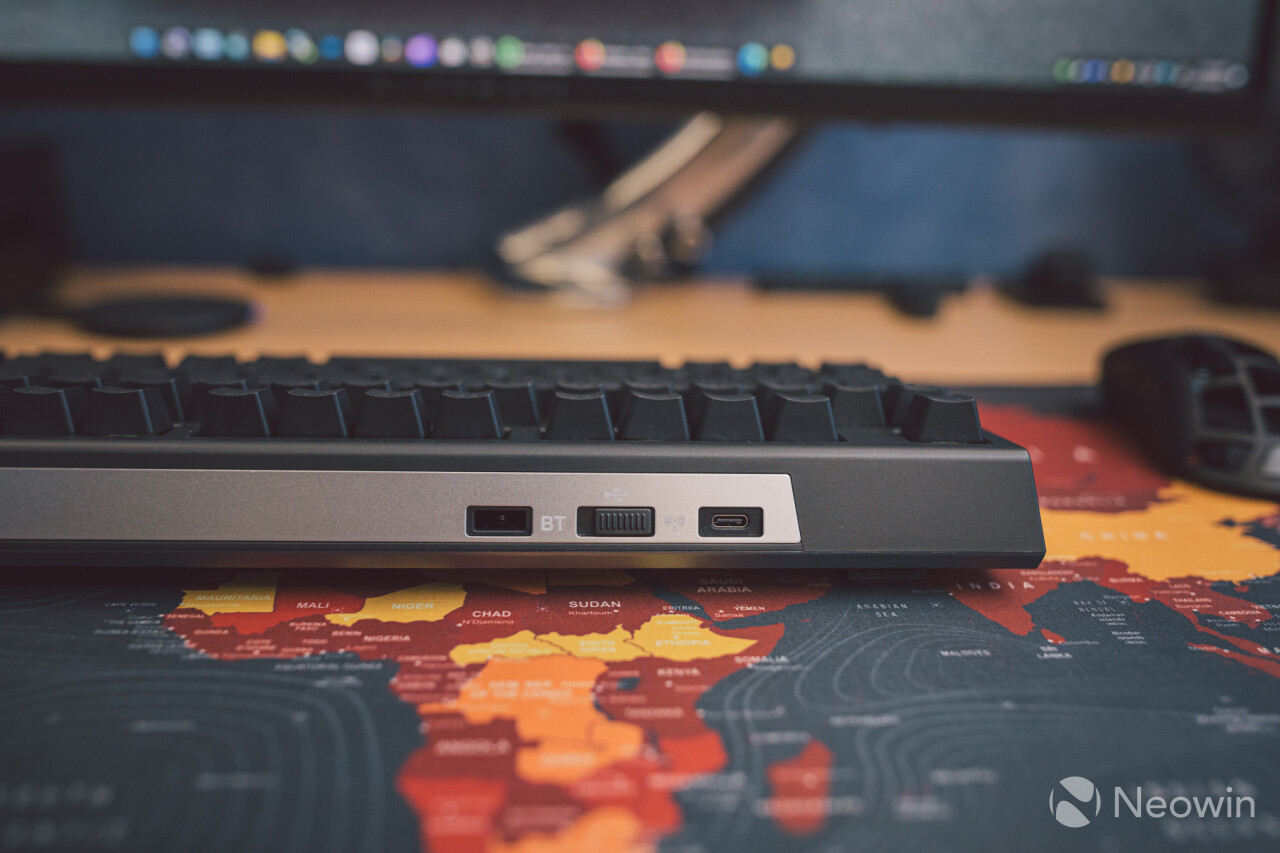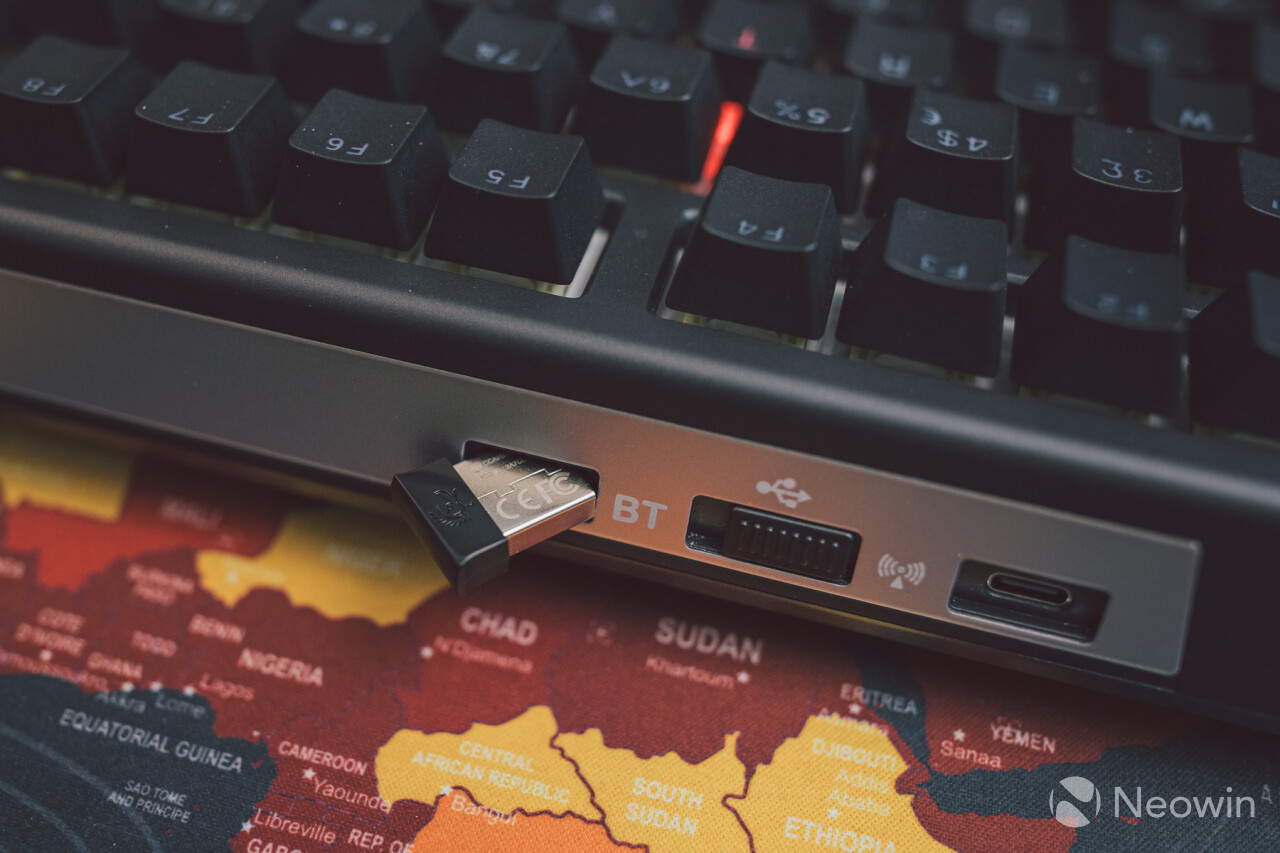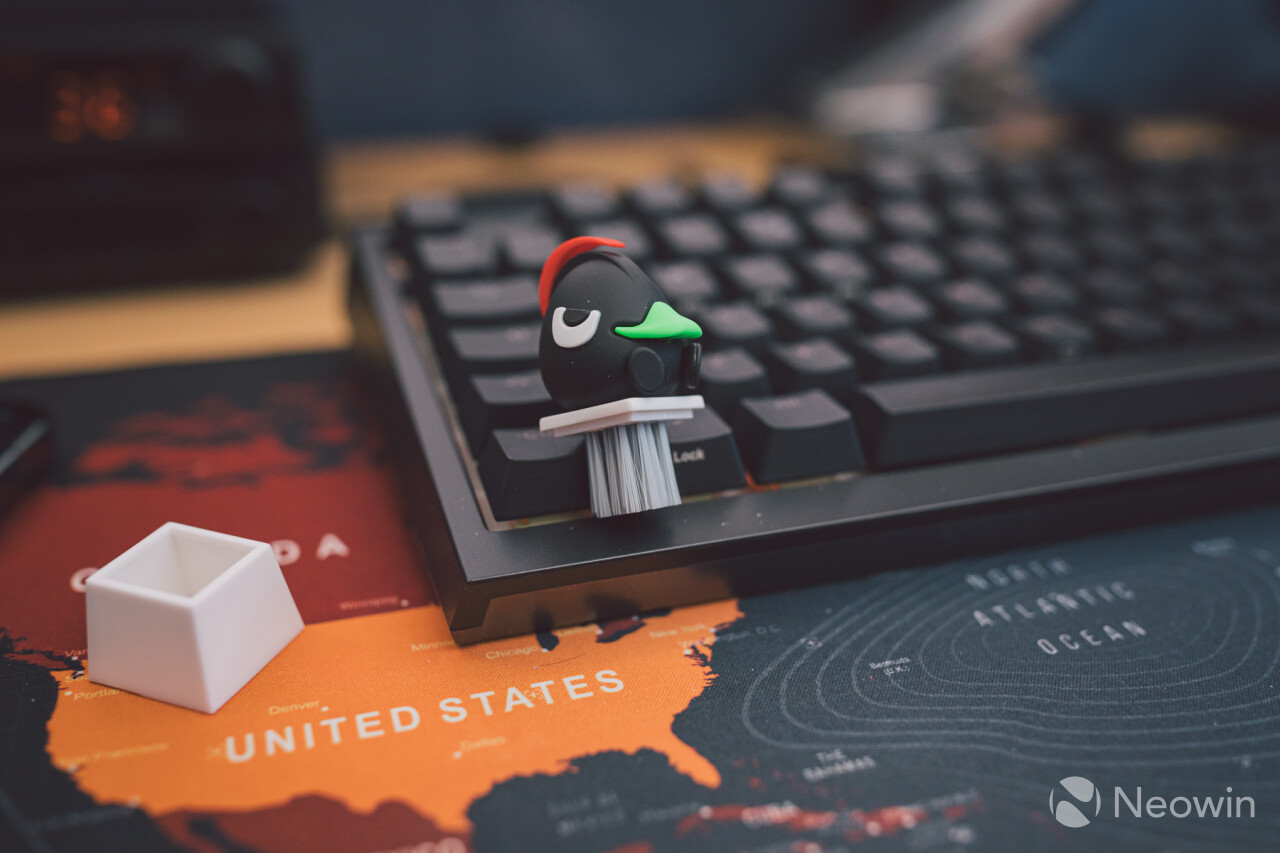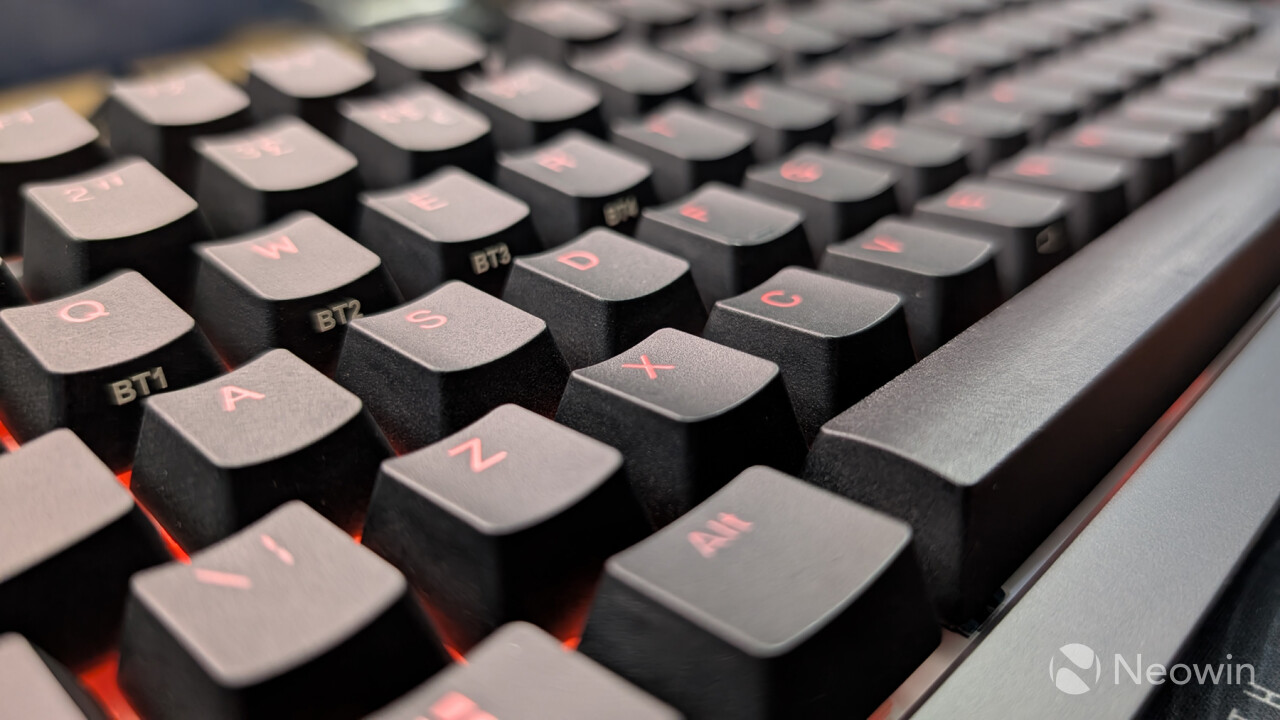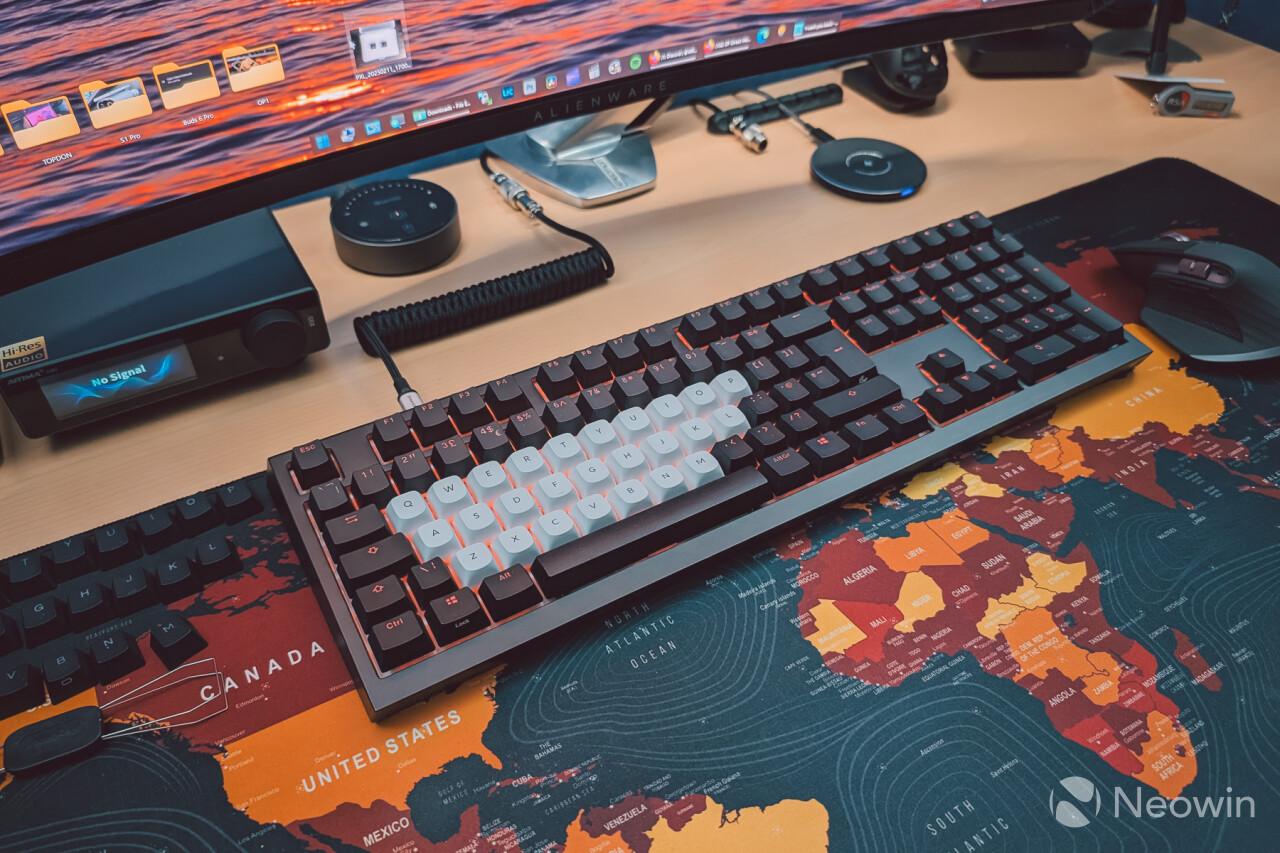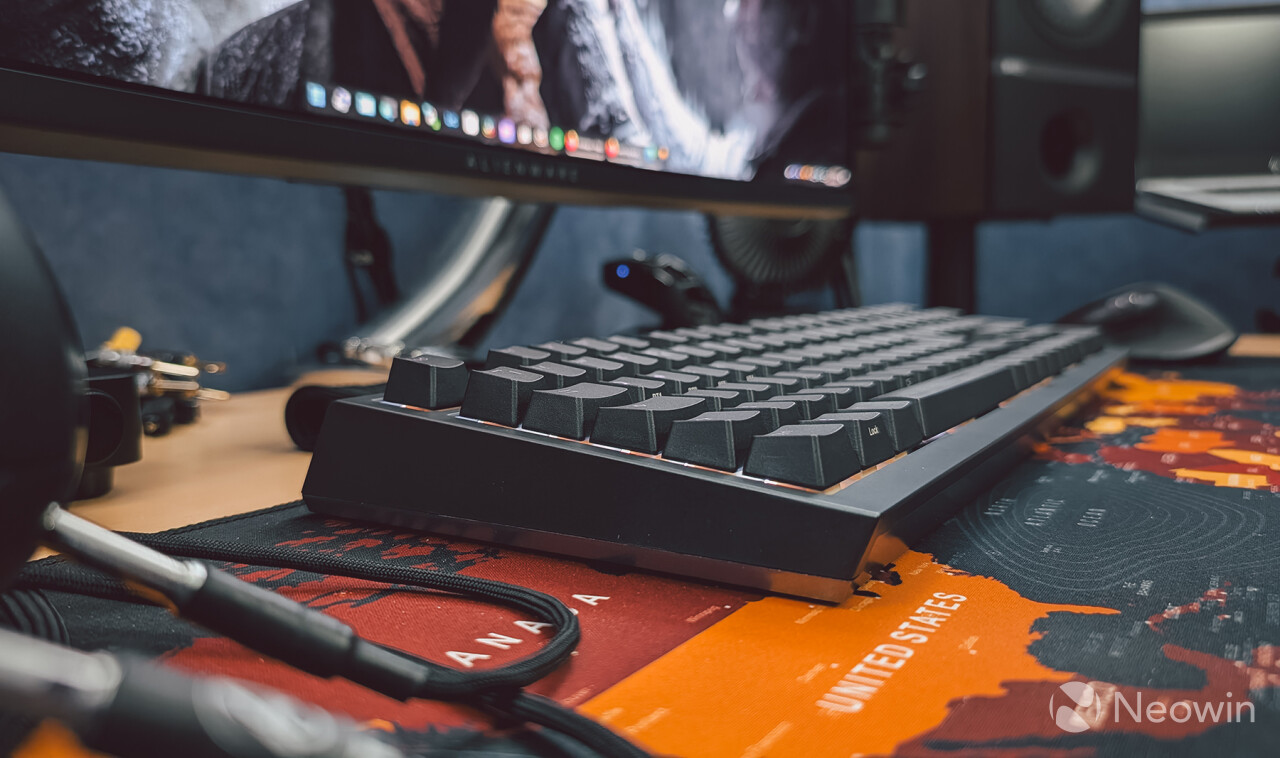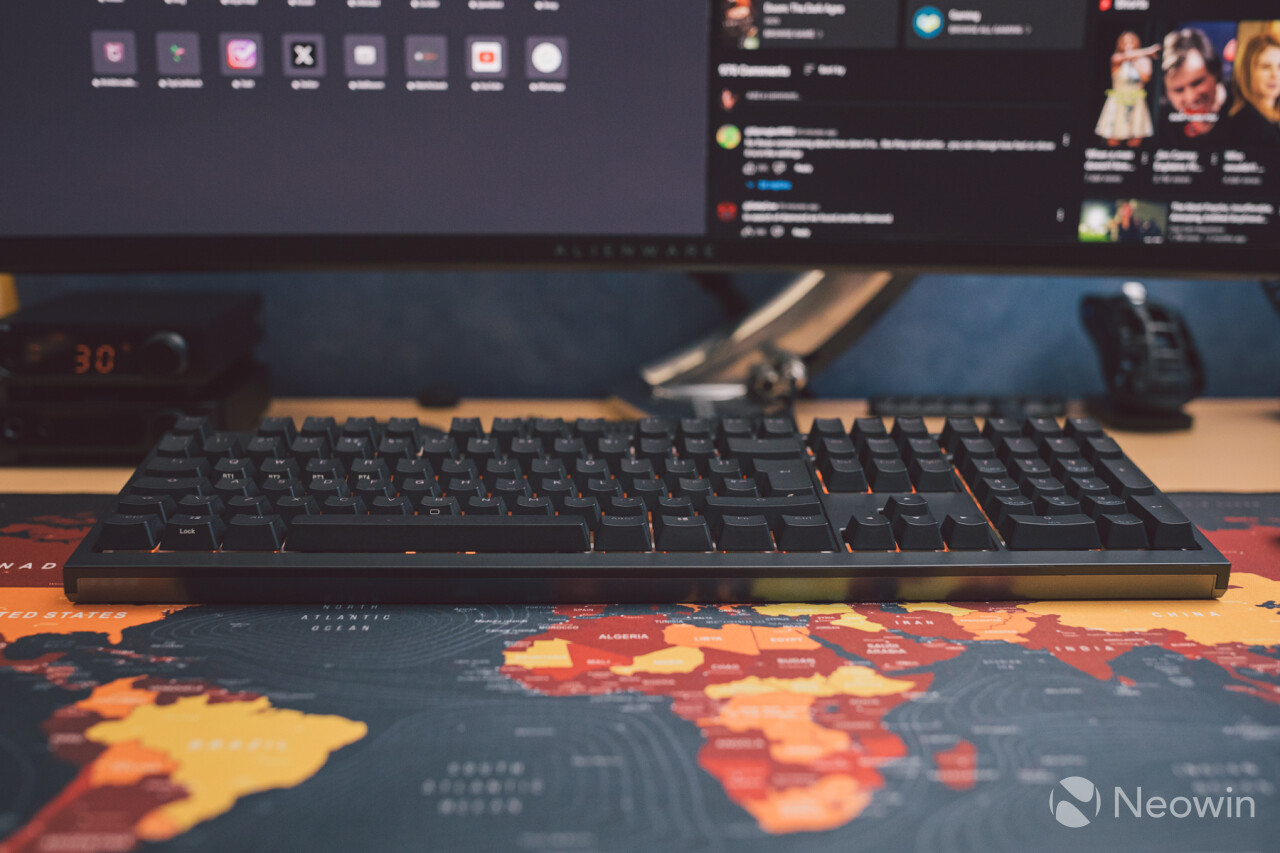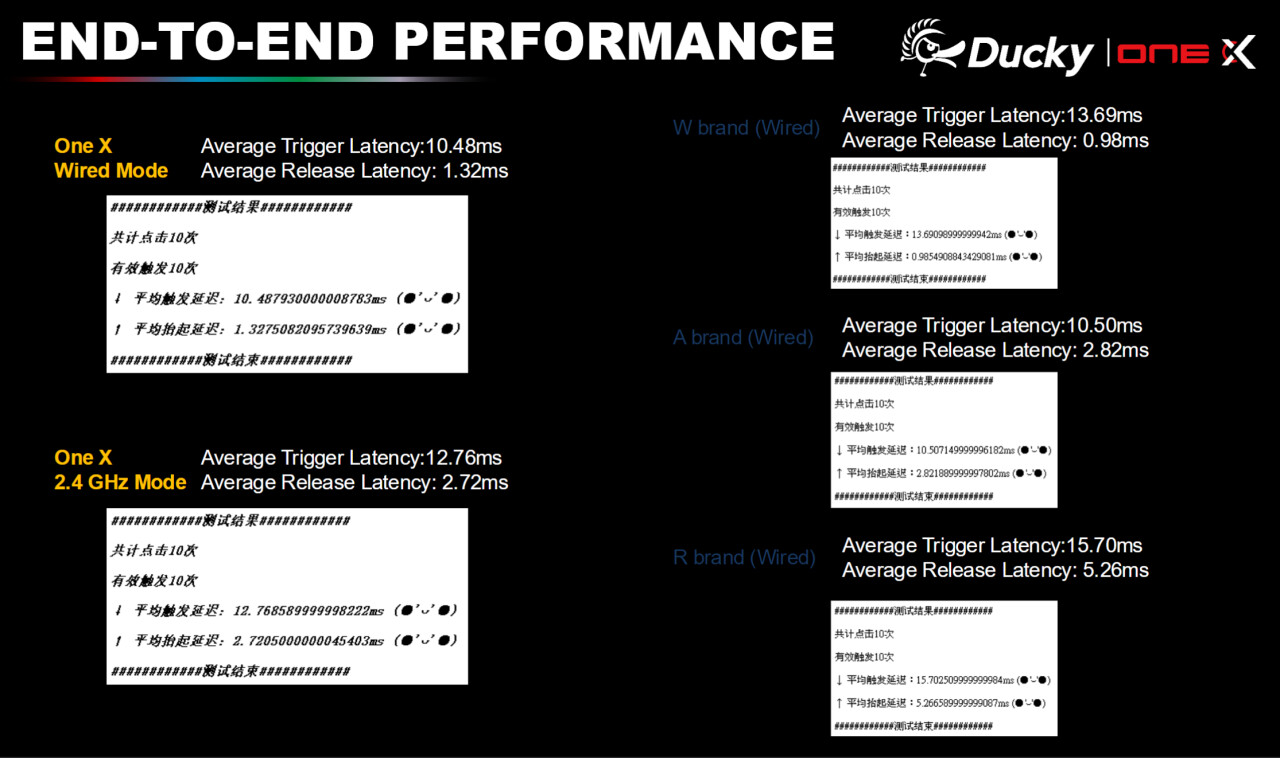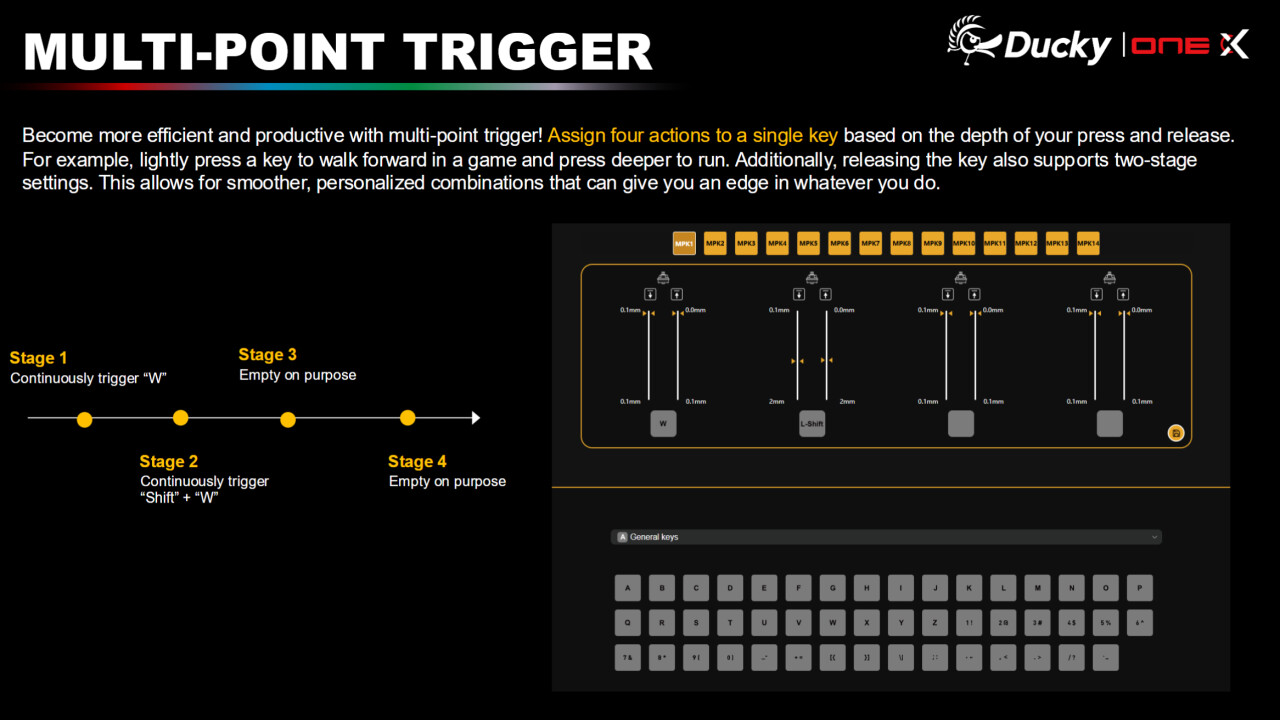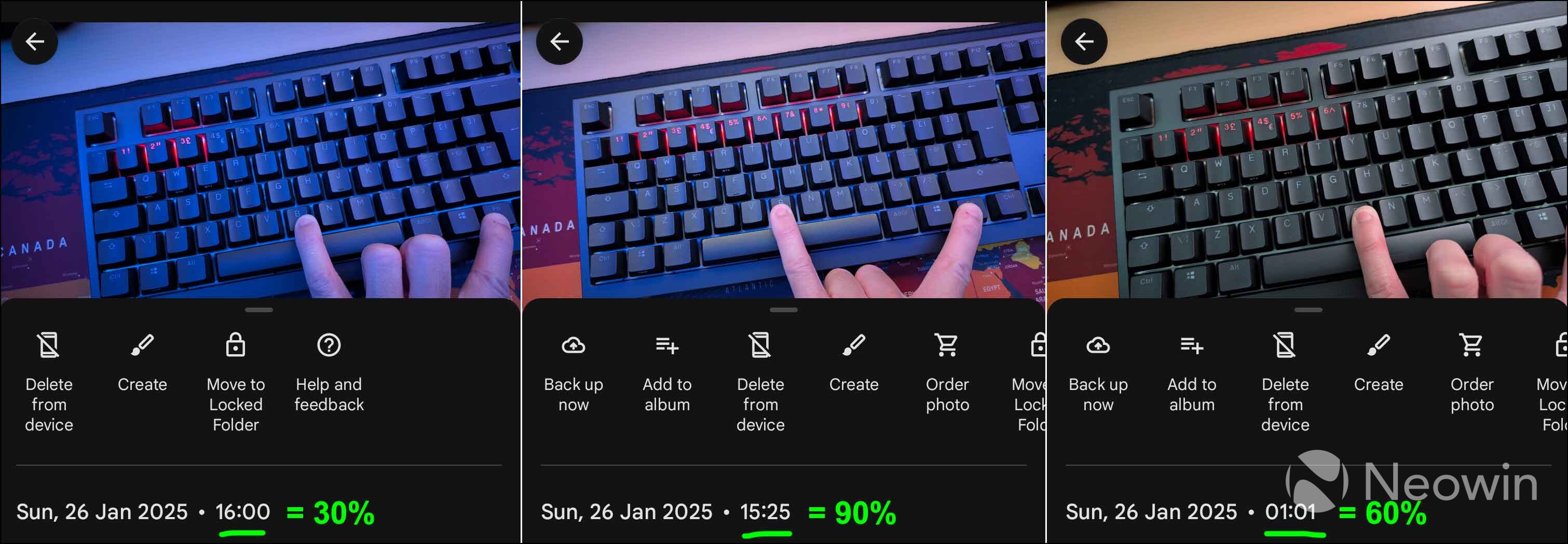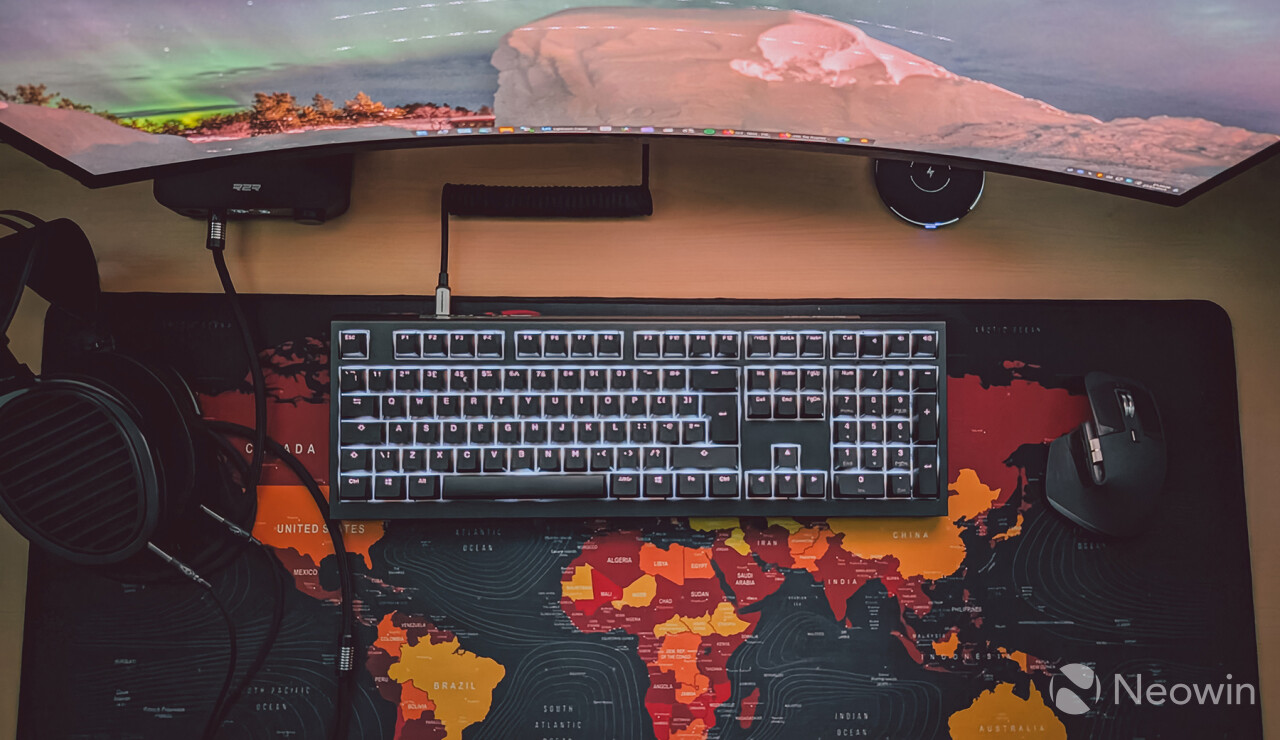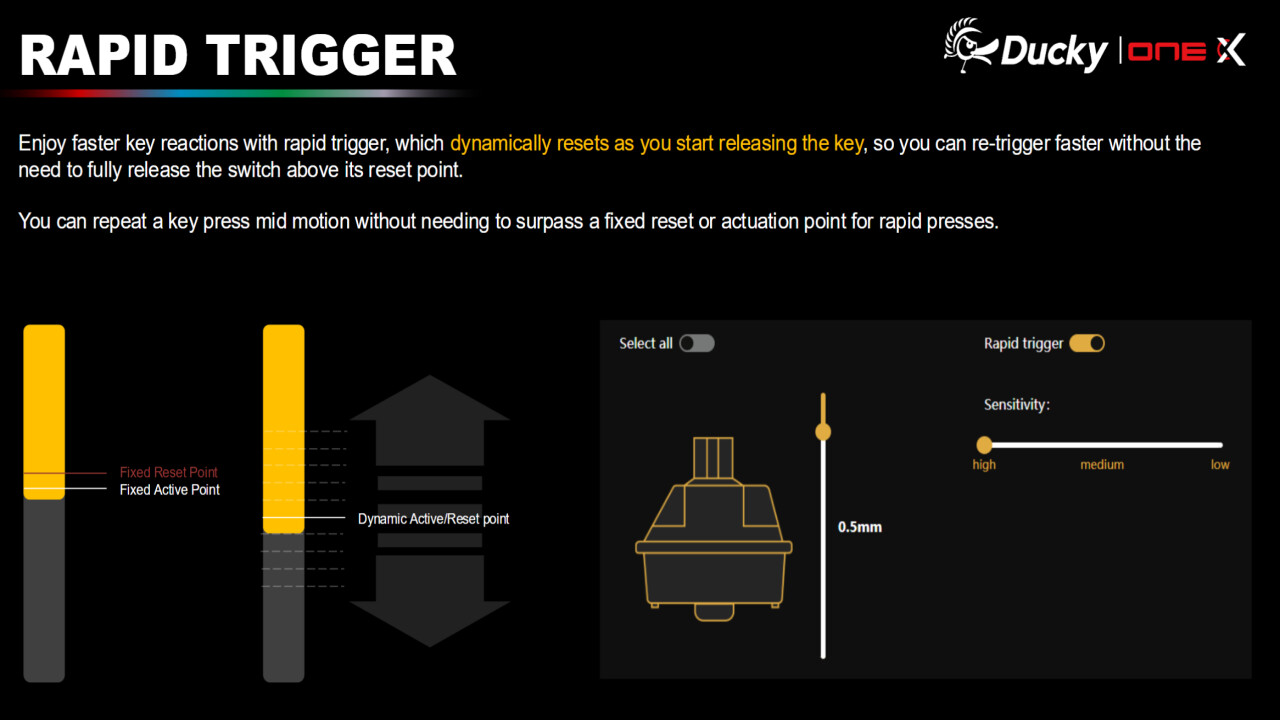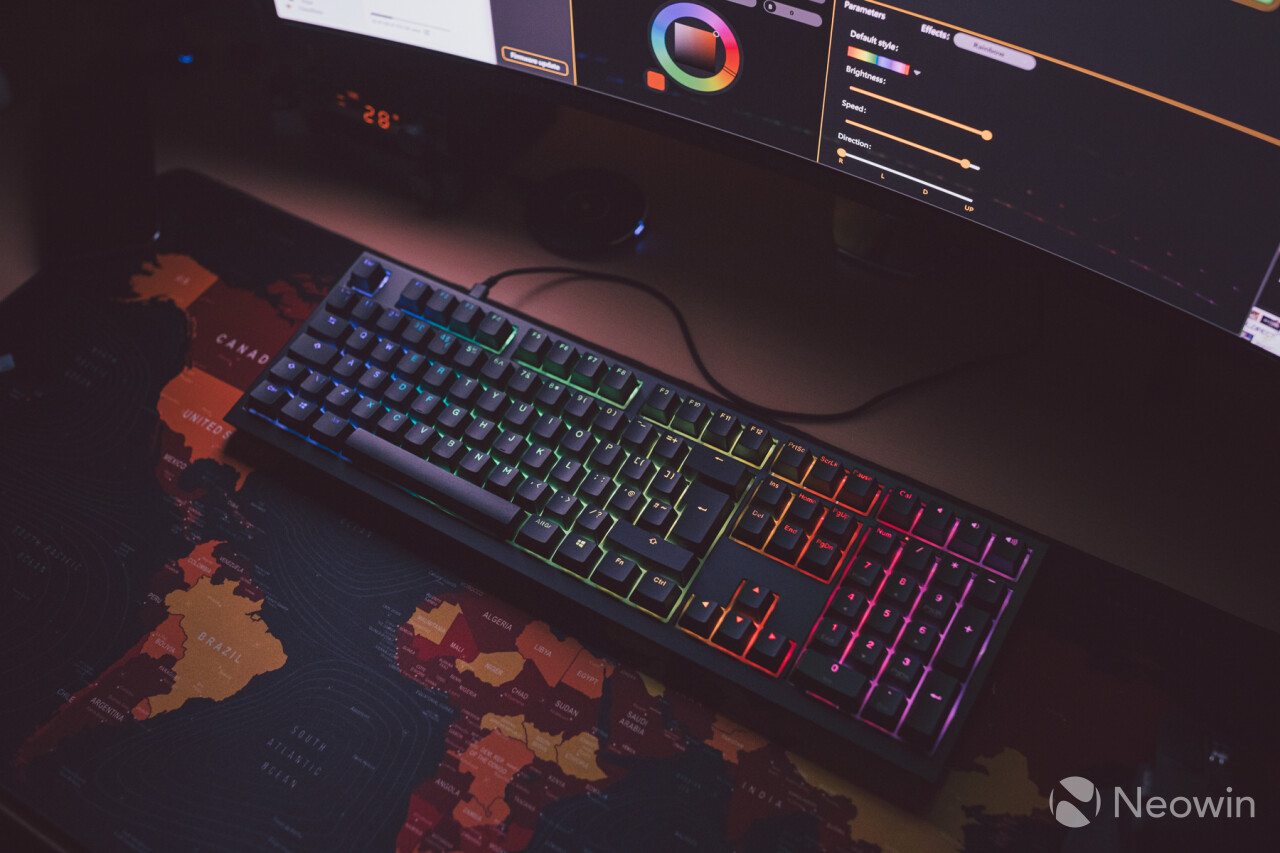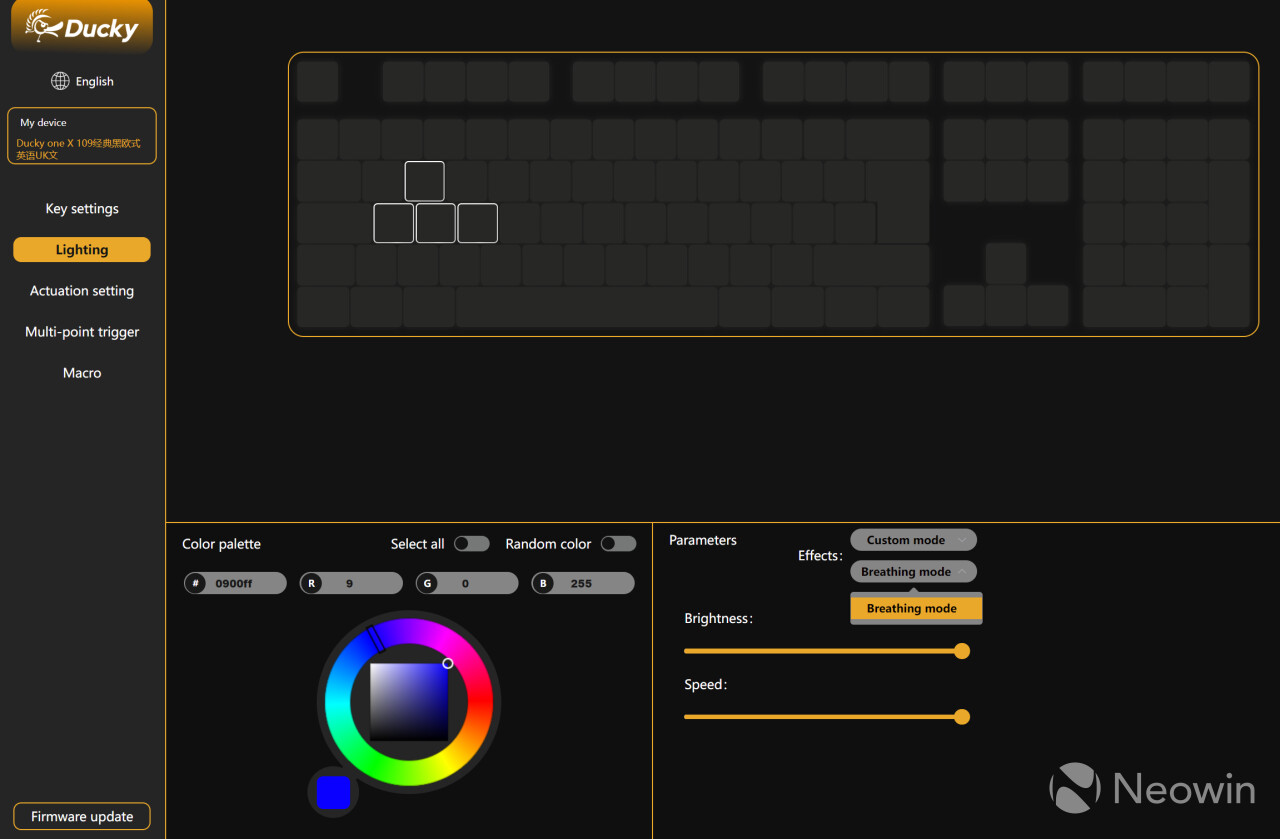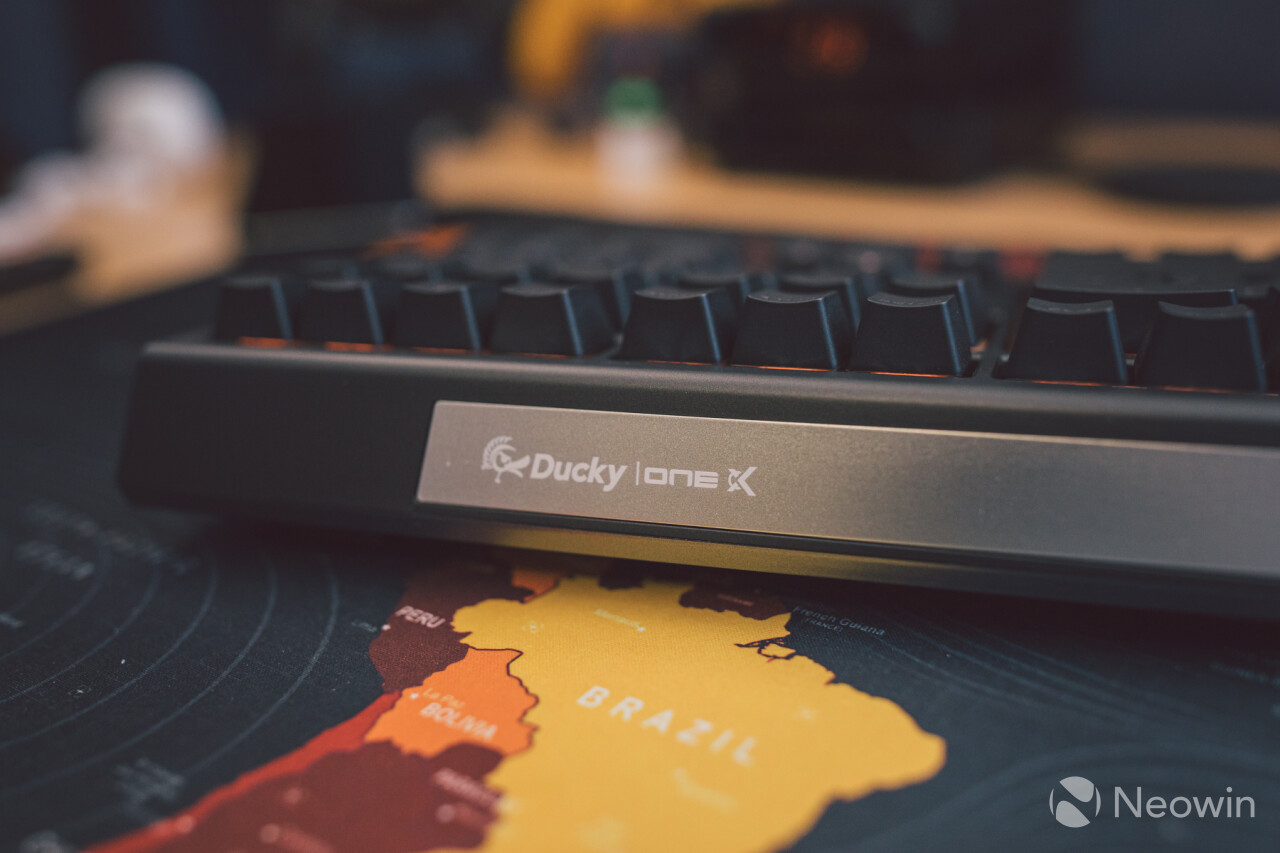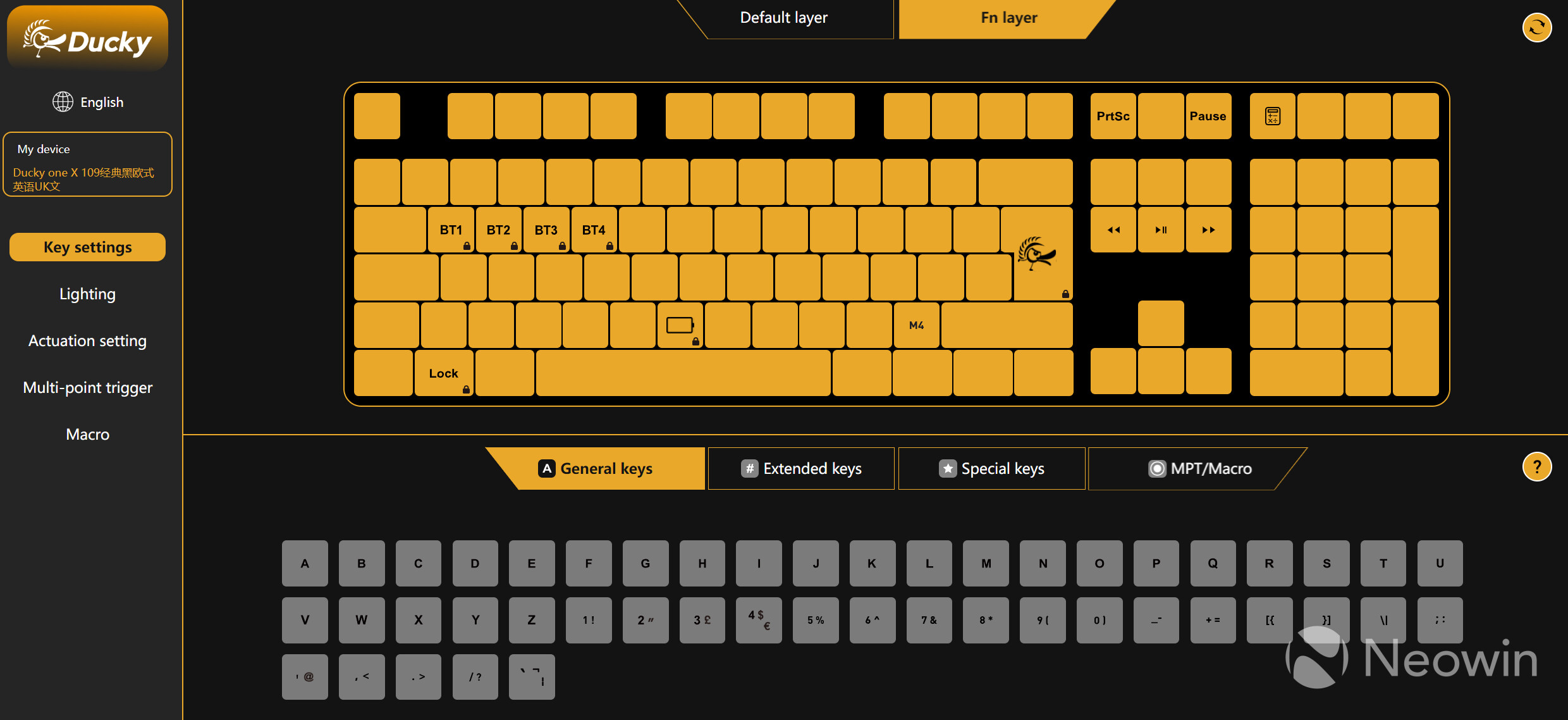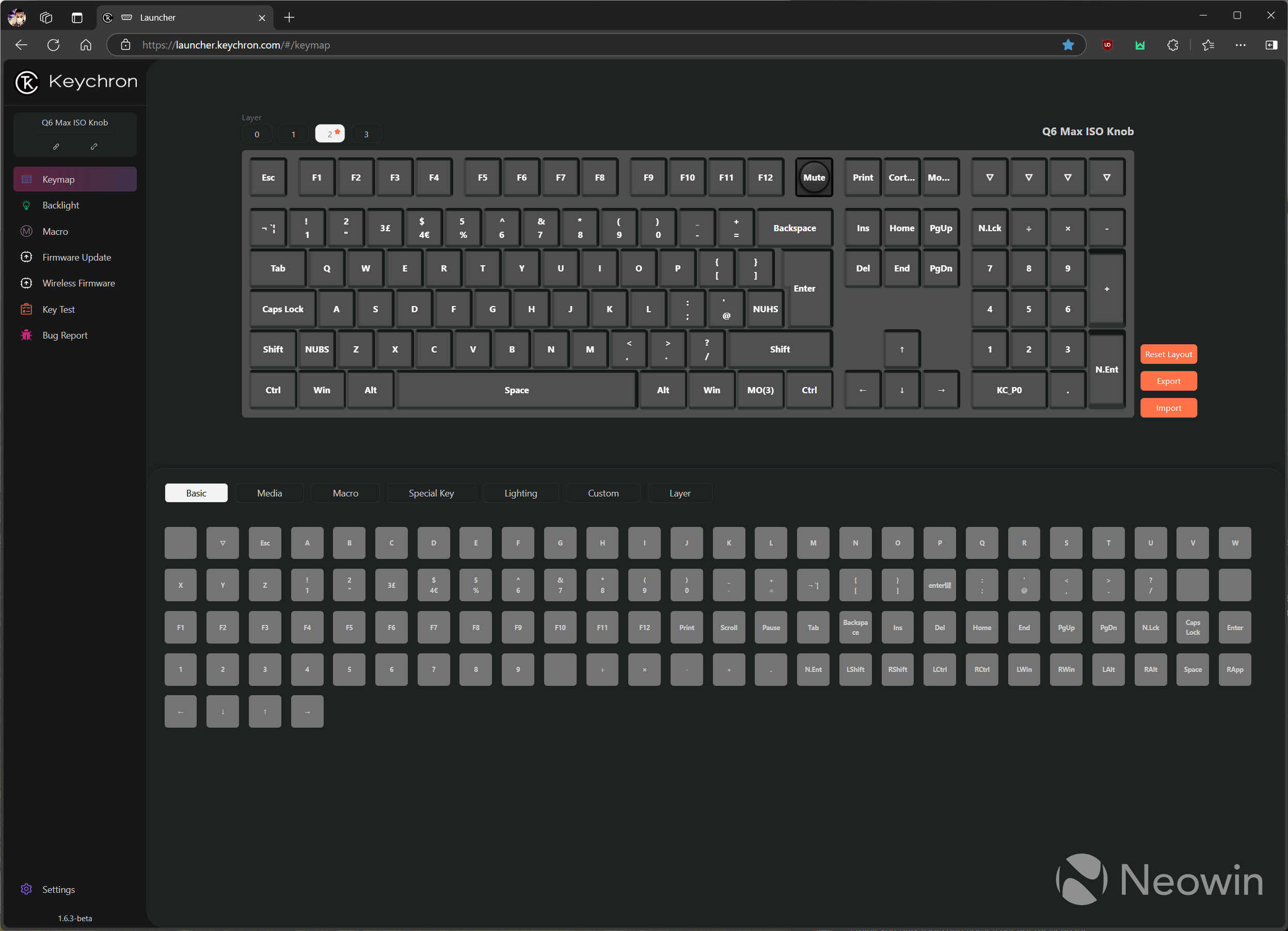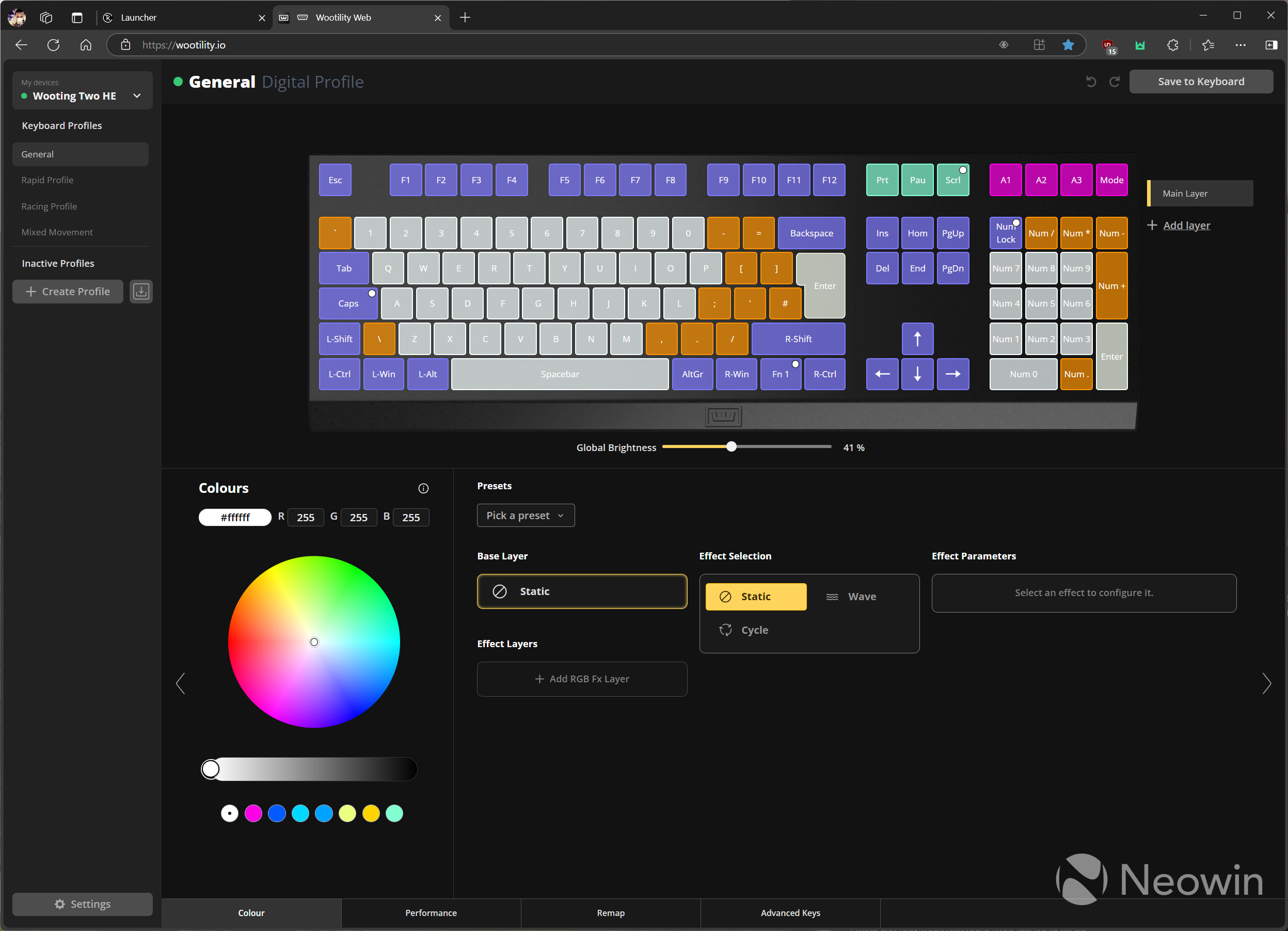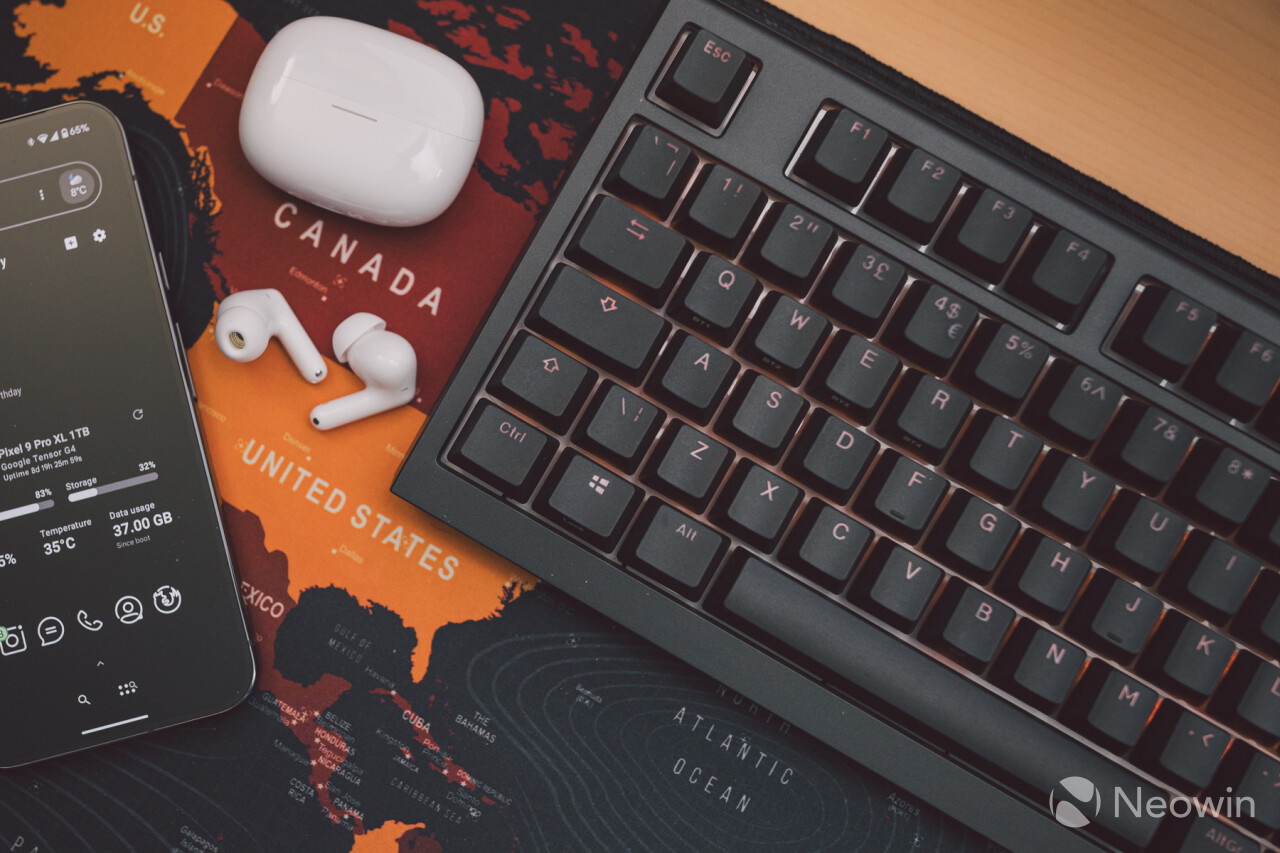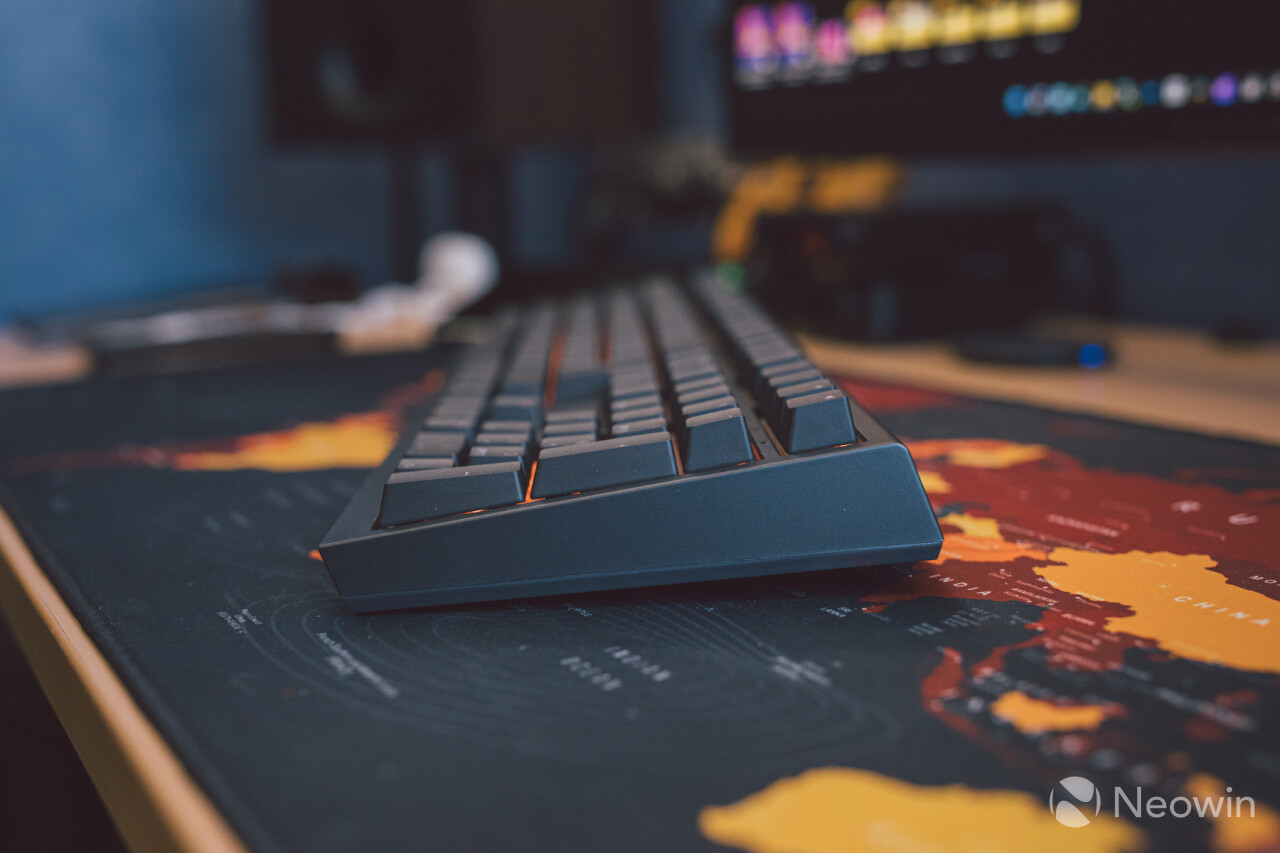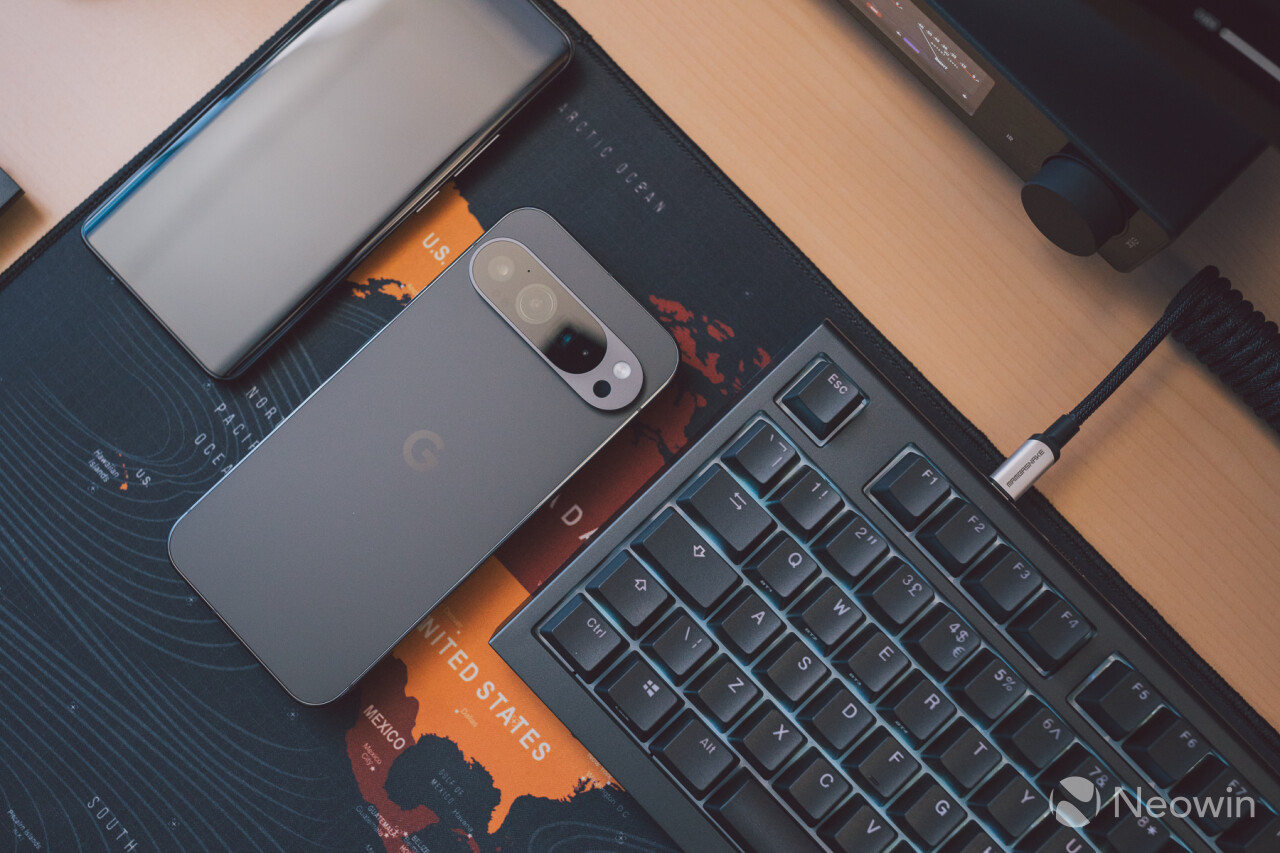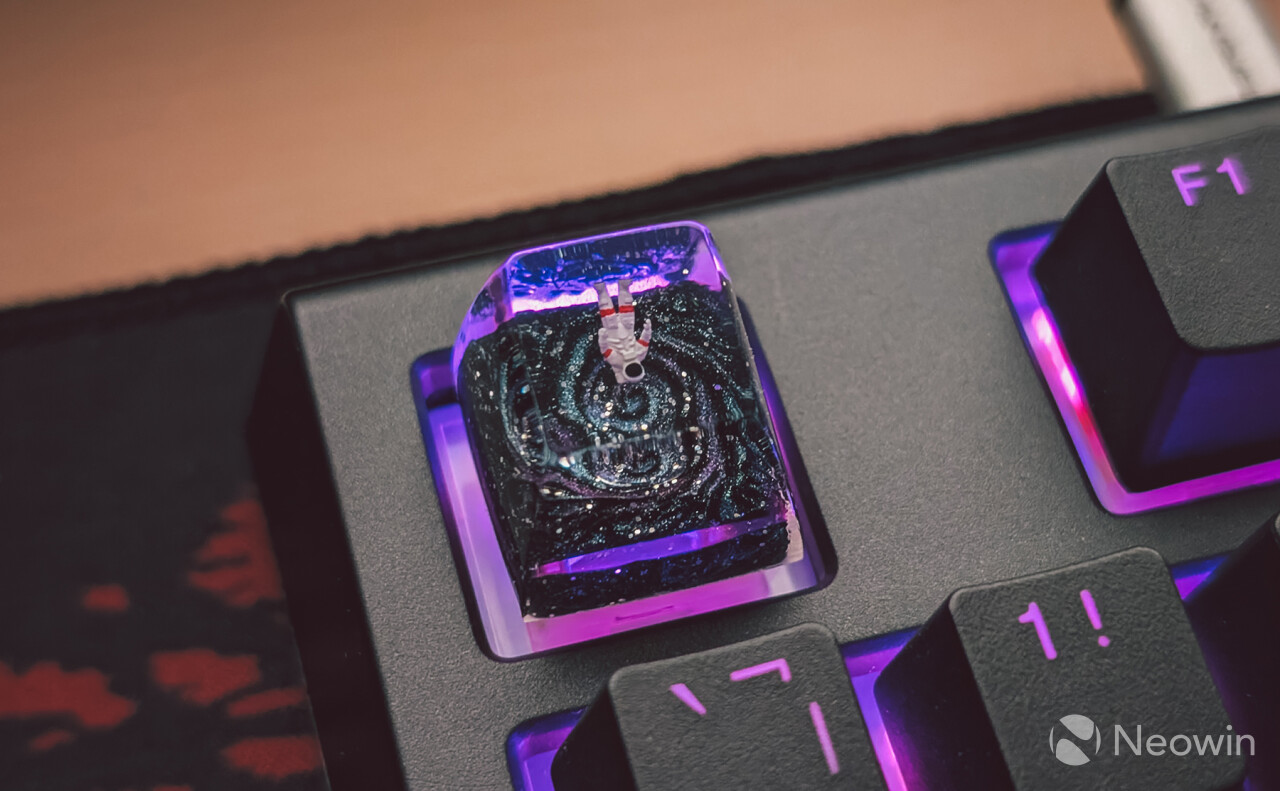It was a quiet 2024 for Ducky with only two new keyboard releases, the One 3 Pro series, and the Zero 6108, this is compared to the seven released in 2023. That quiet spell was not without good reason, though, because today I bring our readers an in-depth review of what Ducky has been cooking, the One X, using Ducky’s new in-house, and world-first, inductive switches offering tri-mode connectivity and aimed at gamers and productivity users alike.
Our friends at Overclockers UK shipped a pre-release sample out to me to check out given my past experience with Ducky hardware. This is also Ducky’s first try at using a web-app based software configuration tool which requires only a compatible web browser. It’s a convenient way to set up a keyboard without having to install any local software or drivers and I will explore what it is currently capable of a bit later.
Whilst we often see bugs and features missing as brands find their feet with new releases, especially with a whole ecosystem shift, Ducky has been very receptive to feedback and recommendations from us early testers, I spent nearly two hours in a call talking about the things I have liked about the One X so far and what I’d like to see addressed or added.
It was also a chance to hear what Ducky’s vision is for 2025 and beyond with the One X paving that path.
It did not take long for me to set the One 3 Pro Nazca Line to one side and use this One X as my full-time keyboard the past month or so. Those Cherry MX2A Red switches on the Nazca feel and sound awesome, but something about these inductive switches, and the improvement on keycap feel (more on this later, too) as well as the extra heft meant typing was a creamy experience, that’s the only way I can describe it.
I’ve also had the chance to compare this new keyboard against its direct competition, Wooting and Keychron. Generally it is accepted that Wooting does the best full-size keyboards for gamers, though these are not the most comfortable to spend hours typing on, that is where Keychron comes in, and now Ducky with the One X.
Where the Nazca Line has audible slap from each key bottoming out, the One X is dampened and smooth, there still is some noise, but it’s a few hundred grams heavier with gasket based suspension to control key feedback and reduce noise further.
There is no obvious casing flex either when pressing hard down on a corner on the desk thanks to a more rigid internal structure, and the aesthetics are classically inspired this time round, no two-tone keycaps, no curved side panels, just straight to the point business.
First shown off in the summer of 2024 at Computex, Ducky had the One X on display with a release window slated for the end of that year. This keyboard was using never before seen (for a keyboard at least) inductive switch technology, and it seemed to garner quite a bit of attention with attending tech-outlets with articles popping up for a while after the event.
As mentioned, the One X was originally due to arrive before end of 2024, but some delays led to an announcement in November saying the following:
Well, the time has finally arrived, let’s press some keys….
| Ducky One X (DKON2408IST3) | |
|---|---|
| Size variants | Mini (60%), Full (100%) |
| Colours | Black, White |
| Case material | ABS |
| Mounting style | Gasket-mount |
| Plate material | Metal |
| Switches | Ducky Inductive Switch – linear, 3.5mm total travel, 40g initial force |
| Stabilisers | Ducky plate-mount stabilisers |
| Acoustic control | QUACK Mechanics+ 7-layer design with gasket mounting |
| Lighting | Full RGB |
| Connections | USB-C, Bluetooth (4 device profiles), 2.4GHz dongle |
| Customisation | Browser-based utility () |
| Keycaps | Ducky 85% high-purity PBT doubleshot keycaps, OEM profile with shine-through RGB |
| Angle adjustment | 8°, 11°, 14° |
| Ghosting | NKRO (wired), 6KRO (wireless) |
| Polling rate | 1000Hz (2.4GHz and USB) |
| Dimensions | 452 x 150 x 41 mm |
| Weight | 1605 g |
| Battery | 2500 mAh |
| Power in | 5v 1A |
| Release date | February 18th 2025 |
| Price | £179.99 / $179 |
Switching it up
I did some additional research before diving into the One X since this is new territory for me as well. It seems that at the same Computex event, Wooting was also showing off its keyboards using magnetic hall-effect switches which have become Wooting’s bread and butter and rather large following emerging as a result.
I actually have one of these boards (Wooting two HE) and have been comparing it against the One X. the two HE using Lekker’s magnetic hall-effect switches. The two HE also uses Doubleshot PBT keycaps, and whilst they appear very similar, there is a small amount of difference in touch-texture and visual appearance, though it is subtle, note also that both keyboards are priced similarly.
To go one step further, I also requested one of Keychron’s top models, the Q6 Max, a heavyweight board also sporting PBT Doubleshot caps but slotted on top of traditional Cherry MX Red linear switches instead.
Ducky’s PBT keycaps look and feel that little bit more premium, I would say, although the comfort of Keychron’s keycap due to its design and profile shape remains unmatched.
The diagram above shows why the One X weighs 1.6 KG and feels the way it does, the two HE is under 1KG, whilst the Q6 Max is a rather portly 2.1 KG.
Wooting is also renowned for its gaming keyboards in general, and whilst it has chosen to go the hall-effect switch route, Ducky’s choice appears to offer similar performance as hall-effect, whilst allowing a wider audience to enjoy this switch technology without the downsides seen by hall-effect, which includes only wired connectivity, magnetic interference and the possibility of magnetic decay depending on the quality of magnets used.
Both hall-effect and inductive switches allow the user to customise the actuation distance whereas mechanical switches cannot.
So how does inductive differ to hall-effect, and do either match up to the established mechanical switches we’ve known for years from brands such as Gateron and Cherry?
Hall-effect switches measure the magnetic force when pressing a key which has a magnet in the switch stem via a sensor on the PCB for every switch on the board.
This of course requires a lot of power and is why you don’t see hall-effect keyboards that offer wireless connectivity.
Both hall-effect and inductive afford the ability to get a granular multi-point analogue input, and whilst Wooting has the additional feature of cloning joystick input which makes games see the keyboard as a joystick, Ducky has decided not to go this way and instead enable Rapid Trigger and Multi-point actuation instead. The adjustable actuation range on the Ducky Inductive Switch is rated 0.1mm through to 3.5mm.
Hall-effect does has the luxury of supporting higher polling rates and precision, yet there are some downsides, some of which have already been mentioned.
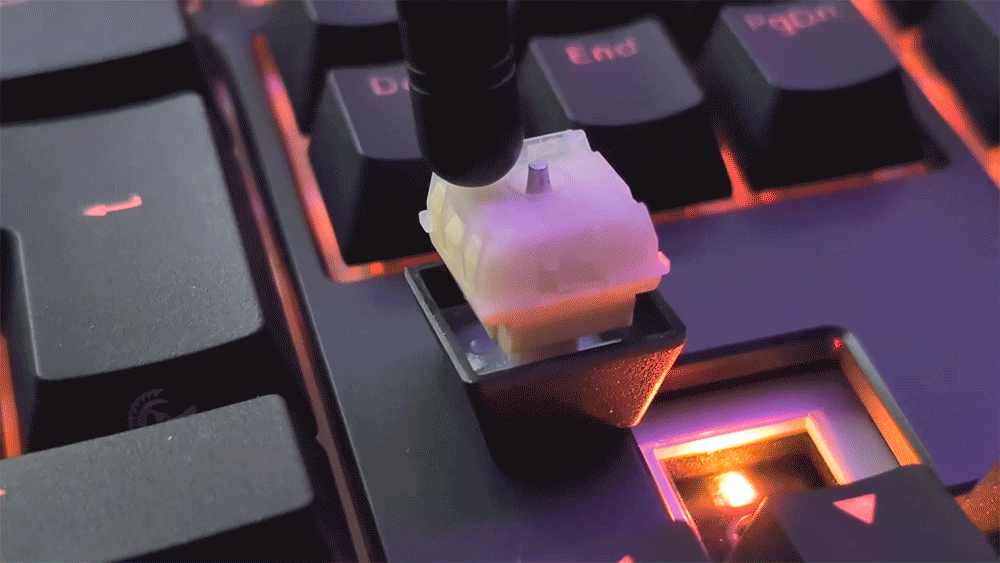
This is where inductive switches come into the picture. the GIF above shows how they operate, instead of a sensor reading the magnetic force from every switch, inductive keyboards have a coil for every switch on the PCB, and the rod connected to the stem inserts into the coil when the key is pressed down, the current running through the coil is than affected by the rod being inserted into the coil and a variable resistance reading is then possible which is dictated by how far in the rob goes into the coil which is why the rod tapers up.
A simple and efficient approach to getting the same type of result analogue result.
It is also not liable to magnetic interference, so accuracy can be greater. The power efficiency allows a keyboard using inductive switches to be wireless, and in the case of the One X, tri-mode connectivity is featured which is should satisfy all types of computer user.
The polling rate is fixed at 1000Hz for both wired and 2.4GHz, though Bluetooth polling is obviously lower at around 125Hz. And whilst pockets of the internet will argue that 8000Hz is a must…. I’ve yet to see a compelling piece of research demonstrating this need outside of competitive eSports competitions, the jury is still out on this one, and my personal experience using Ducky’s last 8000Hz keyboard vs 1000Hz showed no noticeable difference in practice on a 240Hz OLED monitor with the games that I was playing.
Bear in mind that once you go above 2000Hz polling rates, the CPU utilisation goes above 10%, at least that was my observation with a combo of 8000Hz mice and keyboards with an Intel i7 12700KF and RTX 4090, so depending on your CPU/GPU combo, you may not even want to exceed 1000Hz anyway.
Whilst the inductive switches are hot-swappable, they are only hot-swappable with other inductive switches. At the time of writing, these Ducky in-house switches are the only ones on the market, but I hear a bird tweeting that more are on the way from other brands, though no release timings are known.
Comparing this to the latest Cherry MX2A and Lekker Hall-Effect switches, there is a distinct improvement in refinement in both key travel and bottoming out each cap, meanwhile hall-effect magnetic switches like the Kailh Green Hornet, an exclusive switch used by Melgeek on its Made68 TKL keyboard, does not have any obvious resistance increase and feels straight-linear much like how these Ducky Inductive switches do.
Ducky shows that mounting gaskets are used on the One X for its 7-layer composition which are designed to acoustically dampen shock/noise and provide a more comfortable and premium user experience. I can vouch for that with all three keyboards being used back-to-back.
Fair to say that these switches seem to offer the best of both worlds (hall-effect + mechanical) in a single package. Magnetic sensing might still be more precise according to Wooting with higher polling rates, but even it doesn’t deny that inductive switches are very accurate.
The in-house stabilisers provide a smooth and even travel, I only found a slight amount of sideways play with the right shift button, whilst the other keys using these stabilisers were perfect, all switches and stabilisers come pre-lubed for smooth movement:
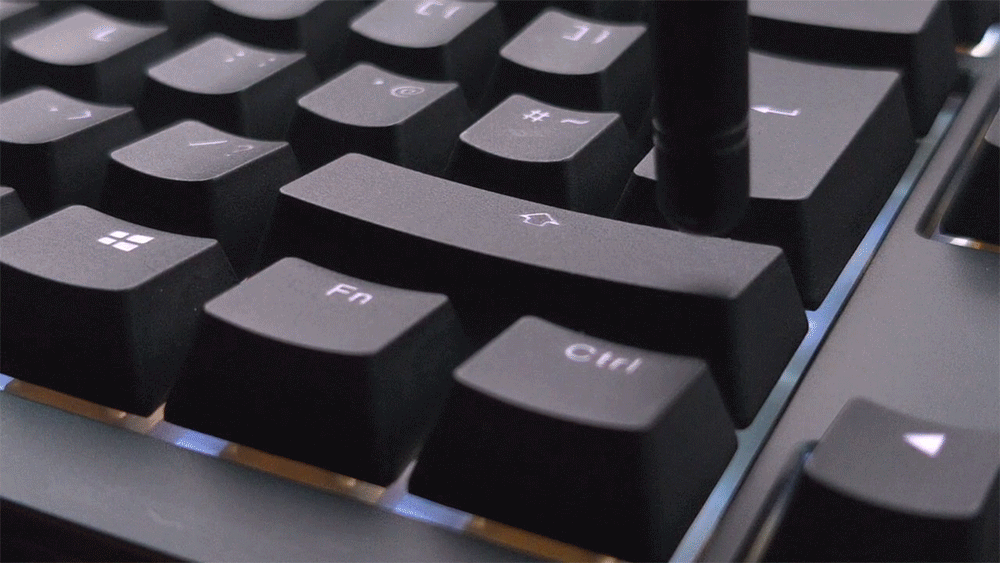
Keyboard design
Compared to the previous One 3 Pro, the One X harks back to traditional keyboard aesthetics. There is no two-tone colouring, no curvy lines or housing panels, just clean-cut edges and flat boxy angles along each side with a safe colourway. It’s the kind of minimalistic theme that I like, and the only thing that would have completed it perfectly was if a coiled cable was included in the box instead of a regular long braided cable that you have to nip and tuck to keep organised, even though it is a nice enough cable.
As a result of this, some of the photos in this review are showing an aftermarket Mambasnake cable with aviator connectors being used. These are inexpensive on Amazon and come in a variety of colours and materials, I can highly recommend them for those wanting a neater looking desktop.
The styling, the weight, the feel of the keys, the acoustics, they all gel. Looks are of course subjective, but I think most will agree, it looks like something tastefully designed that would fit right in on any desk space.
What about objective things? Well, material quality is excellent, even though the outer housing is ABS, it’s put together well and feels solid, almost tank-like. I asked about this during my call with Ducky because past ABS housings such as on the One 3 Pro and Zero 6108 after several months of use started to creak if pressing down on the edges of the casing, the structure with the One X is revised which should mean this is no longer an issue.
Ducky confirmed that the One X’s internal layered design means this should be less of an issue, but that only time will tell as the keyboard naturally ages. Ducky also noted that the demo boards it had shuffled around since Computex for months had no such issue. Promising indeed.
Compared to the Keychron Q6 Max, well there is no contest here as the Q6 is housed in an all metal casing and weighs considerably more with better profiled (OSA) keycaps. If ultimate comfort and creamy typing is your preference, then the Q6 Max is the one to go for. But if you want a fair dosage of all of these things in one keyboard that also has modern gaming features like Rapid Trigger, then the One X is the one to check out.
People like me would have preferred a central location for the USB port, but I was told this is a decision based on surveying how people use their keyboards and that left aligned was the most popular location. Fair is fair.
I’ve been using the One X via both wired (main PC) and 2.4GHz (work laptop). Bluetooth works fine having tried it briefly connected to my phone and tablets. Connection between all modes is rapid.
The slot for the 2.4GHz dongle is a nice touch to keep it safe when not being used, and the placement of the toggle switch makes it super easy to switch between modes. There are four Bluetooth profiles which can be cycled by pressing Fn and either Q, W, E or R at the same time when the physical switch is set to Bluetooth mode.
Whilst Wooting include a set of extra hall-effect switches as spare, along with an all-plastic key/switch puller tool, Ducky includes a metal tool, no spare switches, and a Ducky key cleaning brush. The bristles are the right thickness and length to get into the gaps and clean away the backboard as well.
Ducky says that these doubleshot keycaps use 85% high-purity PBT for a longer lasting shine-resistant finish. This is news that appeals to me as I cannot stand shiny/oily looking keys as they age with time and would rather recycle a keyboard and try something else once keys start to get that way.
The competition typically uses between 39% and 57% PBT according to Ducky’s internal testing, and comparing these keycaps to the Wooting two HE, the Ducky caps have an edge in surface feel and quality, whilst the two HE’s caps have an almost matte-satin sheen to the top surface.
Comparing to the Ducky keycaps on the Keychron Q6 Max, the Q6 wins for me, the OSA profile is nicer, the keycap edges and sides are more comfortable and the typing experience is better balanced.
I went one step further and swapped out the main keycaps from the Q6 Max onto the One X since they all use the Cherry MX stem profile. The Q6 Max still feels better as it’s a heavier metal keyboard with a greater level of acoustic dampening, but using its keycaps on the One X does subtly improve typing feedback thanks to the ergonomic shape of the keys and the lighter textured surface treatment.
There are other Ducky keycaps available that add some personalisation, and I particularly like the Skyline set, though sadly these are now end of line. Perhaps even a set of metal keycaps would be the end-game set to have, though UK-ISO layout availability can be an issue with most keyboard brands I’ve found. With Keychron, for example, damned if I can find non-white PBT Doubleshot keycaps using the OSA profile in UK-ISO flavour…
Generally you will find that PBT tends to not have shine-through for RGB lighting due to how hard it is to mould and its lack of good light transmittance. Keychron, for example, only has shine-through on the cheaper ABS keycaps, whilst the PBT sets have no shine-through. With Ducky and Wooting’s PBT doubleshot keycaps, we get the best combination.
Performance
Whether general typing or gaming, the One X with these new switches has been a pleasure to use. Like mice, I think the whole 4K+ polling rate thing is possibly edging on the side of over-hype, though I am not a competitive gamer playing eSports titles on a 360Hz+ monitor.
Here is a clip captured at 240fps, slowed to 1/4 speed on a 240Hz OLED monitor. The global actuation distance was set at 2 mm for this test as this is the same value as found on the Cherry MX2A Red switches for the sake of a relative fairness to what most of us are used to. The default One X actuation distance is 0.6 mm for reference:
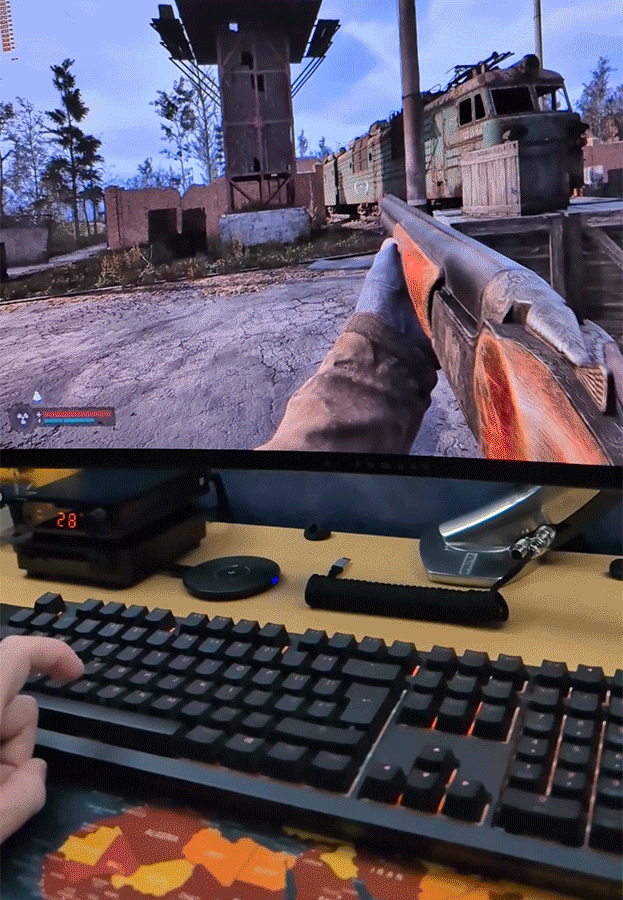
If you must capture high framerate video then slow it down to look for any input delay, the real-time experience is essentially going to be instant anyway. Plus, it must be factored in that there is processing overhead for the total end-to-end latency, this varies depending on individual configurations, so nothing is ever truly instant, even on the fastest hardware.
As well as that, Ducky provide some figures from its internal total end-to-end solenoid-based latency testing shown above.
On sound, I already mentioned that this keyboard’s typing sounds excellent, to demonstrate that, here is a video of typing recorded with an external microphone:
Touching back on actuation distance, I was able to set the keys to the lowest 0.1mm actuation distance which seemed to work just fine for all keys, barely touching a key registers input, so sensitivity is excellent. Combine this with Rapid Trigger and you have switches that actuate with the lightest of touches, then release with a hold or release of just 0.1mm, then re-actuate by pressing down by just 0.1mm regardless of key position – The dream for gaming!
However, setting the max distance to 3.5mm doesn’t work for all keys, for example, the C and V keys on this unit won’t register an actuation even when bottomed out. I have to set the distance to 3.3mm just for those keys and only then will they register an actuation when bottomed out. It seems not all switches are created perfectly equal. This may indicate a firmware issue or tolerance variance between switches and coils. Ducky confirmed that the keyboard does a switch self-check when the One X powers up, so making sure all of the switches are seated properly is important. I have checked this and the issue still remains if I set some keys to 3.5mm.
This isn’t a problem, as personally I never set an actuation distance that deep, doing so also impacts the use of Rapid Trigger.
There is another trigger mode, too, though personally I don’t really have a use for it based on my style of gaming:
Battery
I haven’t been able to run the battery down yet, only to around 30% as it gets topped up throughout the week which is a good sign because the Zero 6108 would lose charge within a day or so since I started to use it more over several months, and that is with both keyboards having the same 2500mAh battery capacity.
This may be a testament to the power efficiency of the inductive switches, and/or Ducky’s advances in addressing issues like battery drain.
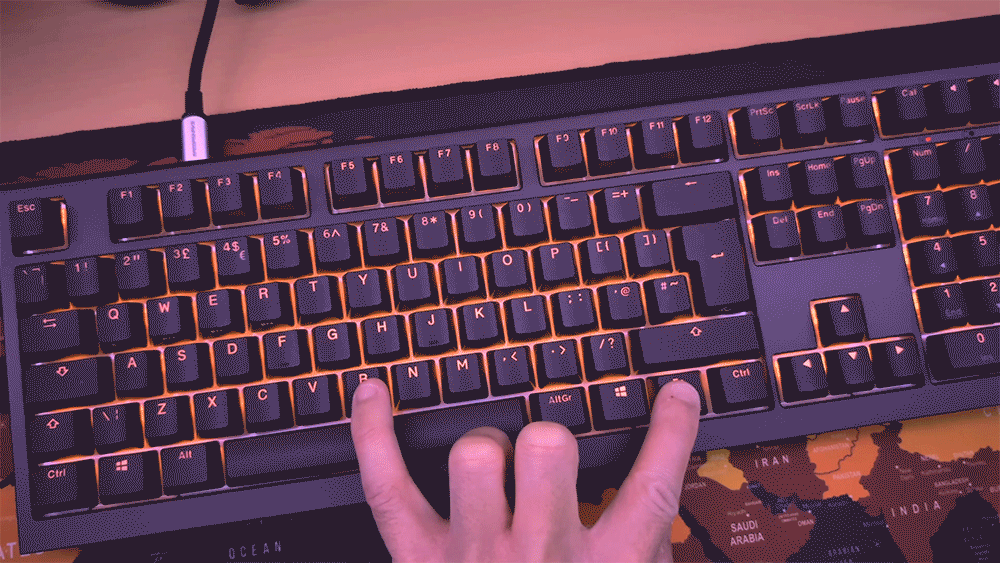
Checking the battery level is easy, the quickest way is to hold Fn and B together to display the level rounded to the closest 10% range. The other way is to check on whatever device it is connected to via Bluetooth. That’s not to say that the indicator is problem-free, though, because I found multiple instances where checking this way showed varied figures which made no sense:
Note the battery level shown versus the time of day, how did the battery level increase when I have been in wireless mode the whole day?! Quizzing Ducky about this I was told that the battery first needs to see a few cycles so the controller learns the maximum range and usage, which makes sense as smartphones do this same process, Android, for example, will train itself over the course of each week in order to give the best estimate for projected battery life based on recent charging and usage.
Though in this instance, my findings were the same as on the Ducky Zero 6108, a keyboard that I still use which still shows random battery level readings.
If you use the One X in wired mode, or if it is in wireless mode when a USB cable is still plugged in, it will charge the battery at the same time, so the battery should never empty if tri-mode connectivity is being used throughout the week.
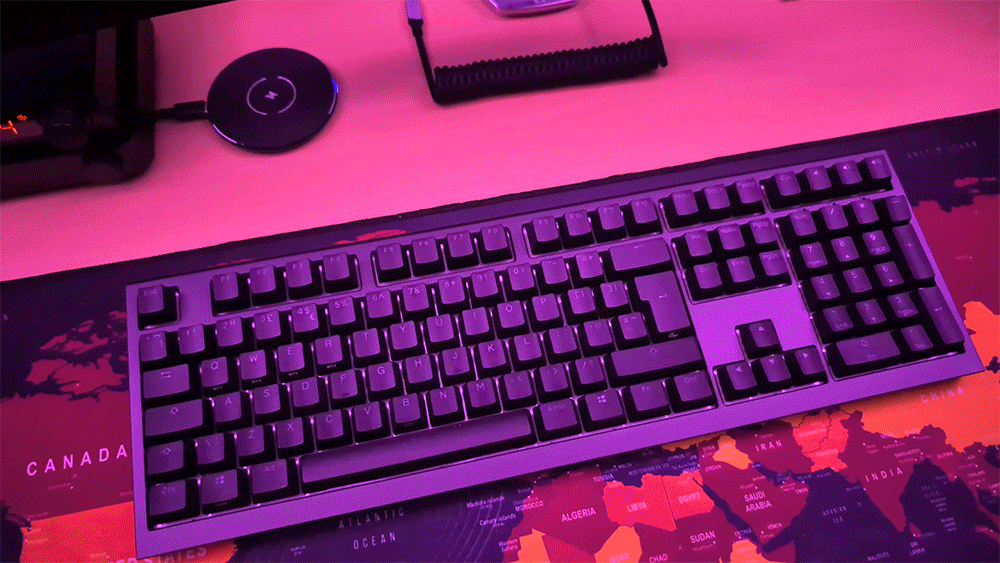
There is a proximity sensor, the lighting turns off after a few minutes of no keyboard input, bring your hand within typing range and the lights come back on. It does not fade in and out like it does on a Logitech keyboard, but it’s good enough.
I noticed that the lighting still turns off with inactivity when in USB mode, other keyboards keep the lighting on when wired. The One X will not wake the lights back up using proximity sensing when in this mode, only when using wireless which is slightly annoying. In these instances I must tap a key for the lighting to come back on. Ducky says this might be a firmware bug and is investigating. Hopefully a firmware update is released once a fix is identified.
Customisation
There is no driver or software installation for the One X, everything is done via a browser-based web application which connects to keyboard. Jumping to launches the web-app where you can get connected to the board.
Browser-based software is hugely convenient, nobody wants to install bloated software like Razer Synapse or Corsair iCue (🤢), and whilst Logitech has made big strides in optimising the footprint of its software (Logi Options+) in recent years, it’s still not 100% perfect as you need to also install Logitech’s gaming software (G Hub) alongside it if you have a gaming device from the brand alongside a regular Logitech device, G Hub is also not immune to stability issues.
Screenshots of the Ducky browser-software interface:
A similar system exists for competing keyboards, too, it’s a convenient way to configure devices from any machine that has a compatible web browser. This web-app only works when the keyboard is connected via USB, not only with Ducky here but also with Keychron and Wooting devices. Currently the supported browsers are Chrome, Opera, Edge and Safari. Firefox users like myself must keep Edge pinned to the taskbar, Boo-urns.
Rapid Trigger is becoming my favourite gaming feature now. It works rather well and is something I did not know I wanted until I was experiencing it, it’s not a game changer (no pun intended), but has that subtle noticeable enhancement that you grow to appreciate, especially when the actuation distance is left at the default 0.6 mm as it allows you a much broader range of key travel to utilise Rapid Trigger.
The only downside with Ducky’s implementation of this feature is that the One X only has one profile, and you may not want Rapid Trigger active when not gaming as it can impact typing stability leading to typos and other errors.
I would have preferred there to be a way to have different profiles instead, one for gaming, one for normal use and so on. I passed this feedback to the team so only time will tell if a firmware update can add custom profiles, note that Keychron and Wooting keyboards do have profiles.
Where the Ducky One 3 Pro uses south facing RGB lighting, meaning the light shines from the bottom of the switches, the One X has north facing RGB. This is often easier on the eyes and when sat at the desk, doesn’t distract I find.
At the time of writing, the basic lighting can be customised for the most part. I found it worked 90% of the time, sometimes it just failed to apply my changes to the RGB colours, and I had to repeat the action.
I also gave this feedback to Ducky and was told that the team are aware of these bugs and are adding some missing features, too since I am writing this review a month prior to launch, so by the time you are reading this, these issues should be resolved, as well as new features implemented.
One of my favourite features is the Fn layer, and even in its early state, the web-app does something better than Wooting’s web-app, Wootility, in that you can map proper multi-key combos to a single key the same way tailored macros can be assigned to a single key. This is something Keychron also does well.
My current Fn layer looks like this, any of those blank keys can be assigned a secondary function with a simple drag and drop:
I think it is a great start for Ducky, and it will be great to see the app adopt many more of the granular features for customisation that we see with competing keyboards.
Comparing the web-based app with the competition was interesting, I found that both Keychron and Ducky offer the best granular control for implementing macros. With Wooting’s tool I was unable to use the same macros as mentioned, though Wooting’s tool offers more options geared toward gamers, such as Snappy Tappy.
Ducky’s app at the moment is missing features that I have been told are being introduced around the official launch on the 18th February, so I am unable to compare directly to the others until that happens. The current state of the app is good enough to see the direction Ducky is aiming for and what I have seen so far is promising and mostly stable enough to have had no deal breakers this past month.
Take a look at the competing web-apps for reference:
Keychron:
Wooting:
Conclusion
Being the world’s first is all well and good, but it often means being the first to potentially experience issues with the new technology and its supporting software as the product reaches a wider range of hands using it in different ways and across a much larger range of computer systems.
I suppose this is what being an early adopter is about, for example, the same was seen with TMR stick game controllers when I had the PB Tails Crush Defender, and again with the first generation of QD-OLED monitors.
These Ducky inductive switches have been superb, whether typing or gaming, the construction of the keyboard usually dictates how the key feedback experience is. Ducky has done an excellent job with the One X here, it’s a fairly hefty keyboard at 1.6KG.
I am surprised there is no metal housing option like there is with the Keychron Q6 Max, even Wooting has a Zinc alloy option (at extra cost). The ABS plastic here is good quality of course, but there’s something extra premium about an anodised alloy shell, that cold feel to the touch is pretty awesome.
Another observation is that the keys/switches are easy to dislodge from the sockets with a cloth during cleaning, or a finger if accidentally knocked. I mentioned this to Ducky and whilst it is being investigated, it doesn’t seem to be an issue when using the keyboard normally, only when brushing something against the keys around the edge of the board, or wiping the keycaps with a cloth and the cloth snags a keycap. These are in-house switches so Ducky should be able to fine-tune the seating of the switches.
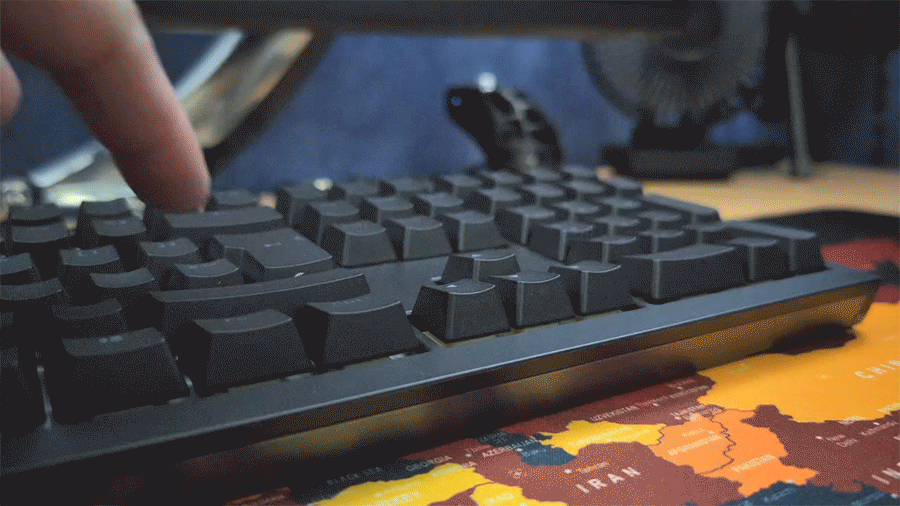
The One X is not cheap, and has a few quirks, but cutting-edge tech often comes at a premium. I would like to see other inductive switch types with different spring rates and tactile feedback to accompany this new keyboard, as well as different colourways for the high-purity PBT keycaps with shine-through.
Yes, the Keychron Q6 Max feels and sounds nicer to type on thanks to its 2.1KG weight and anodised metal housing, but the stabilisers and switches aren’t as smooth in action as the ones on the One X, and the lack of Rapid Trigger is missed when gaming, a feature that only hall-effect and inductive switches offer right now.
I am reserving an additional verdict score point which will be added once I see the Ducky web-software implement missing features and a firmware update is released to address the various bugs I have noted.
The One X paints a promising picture of where Ducky is heading, that destination will only be realised if the user experience is feature-packed from the start, nobody likes to pay a premium and then wait around for updates, as we have seen this with multiple brands before and that leads to a negative early impression that may or may not recover.
I have faith though, Ducky has been receptive to my conversations and everyone seems to understand the importance of a solid launch of this new product line. Has Ducky been quietly cooking away with all the updates and fixes ready for the official launch day?
We will have to wait and see once the team are back from the Chinese New Year break and updates start to flow out. I will update once this happens.
Pros
Inductive switches
Premium fit and finish
Adjustable actuation for all switches
Rapid Trigger
Multi-point trigger
Browser-based software
High-purity PBT keycaps with shine-through
Clean aesthetics
Tri-mode connectivity
Cons
Edge keys can be dislodged easily by accident
RGB proximity sensor doesn’t work when in wired mode
Only one on-board profile
No metal housing option at this price range
The Ducky themed ESC key is no more
Some minor lighting whine at mid-colours
Report a problem with article

